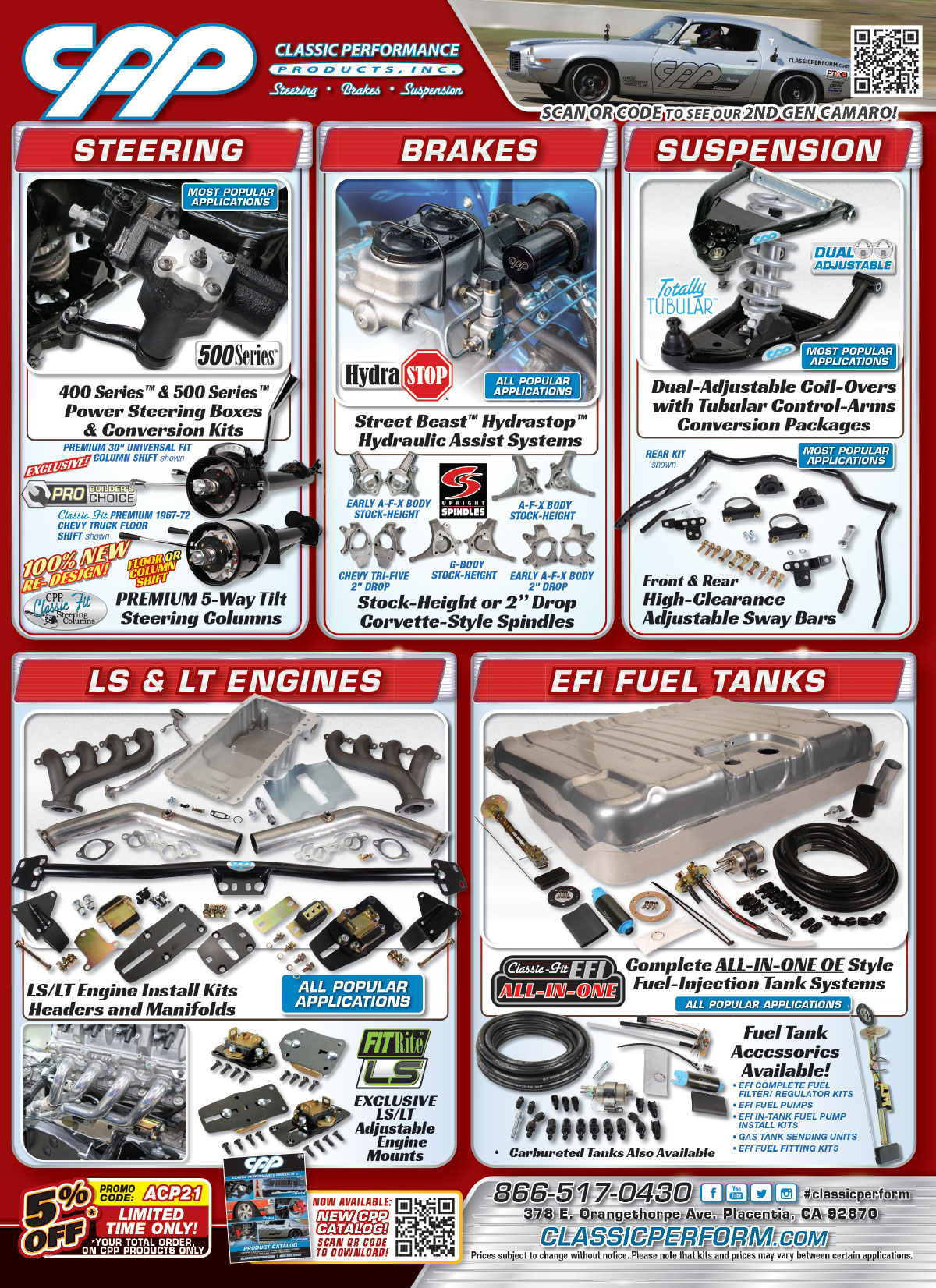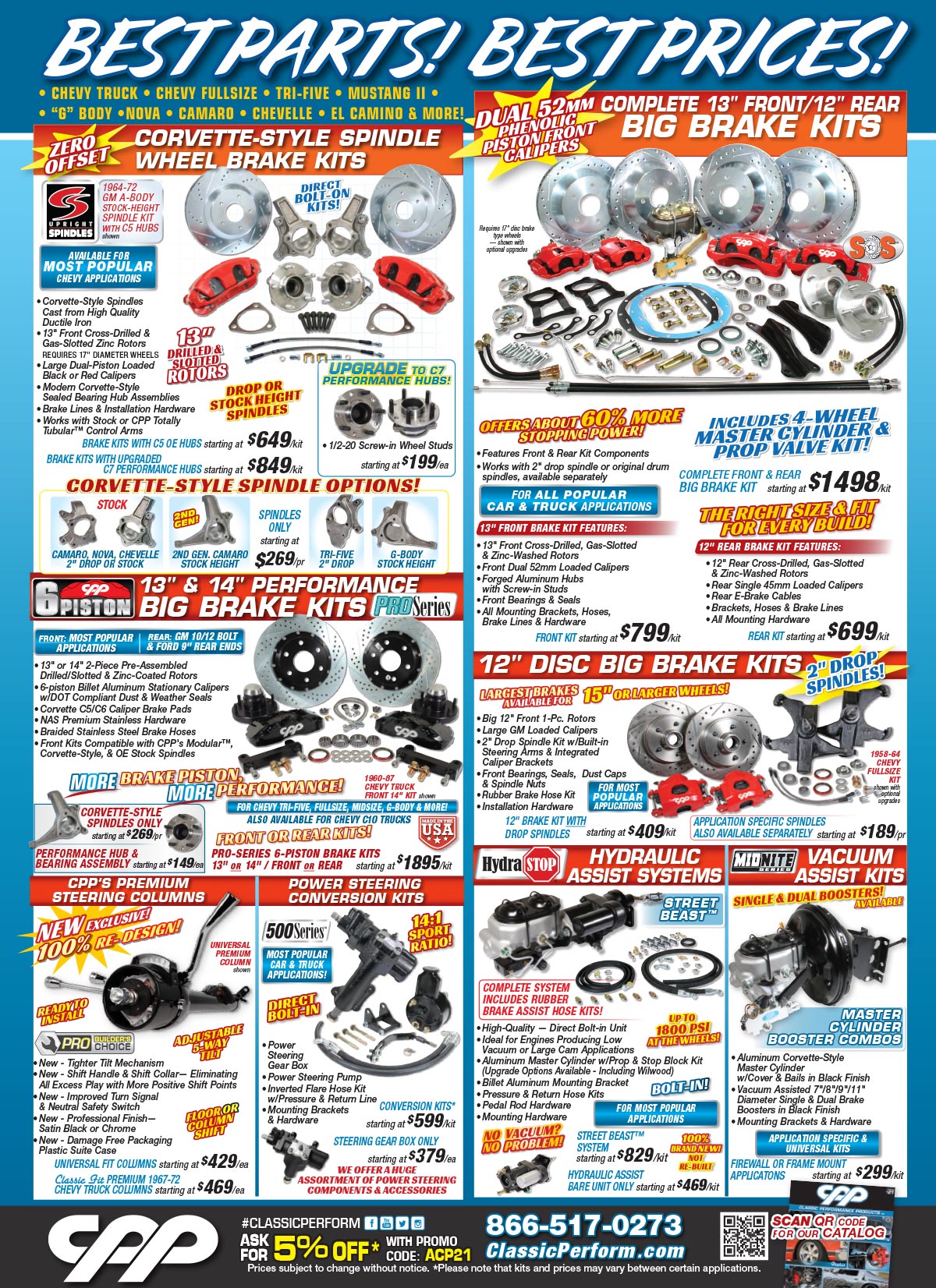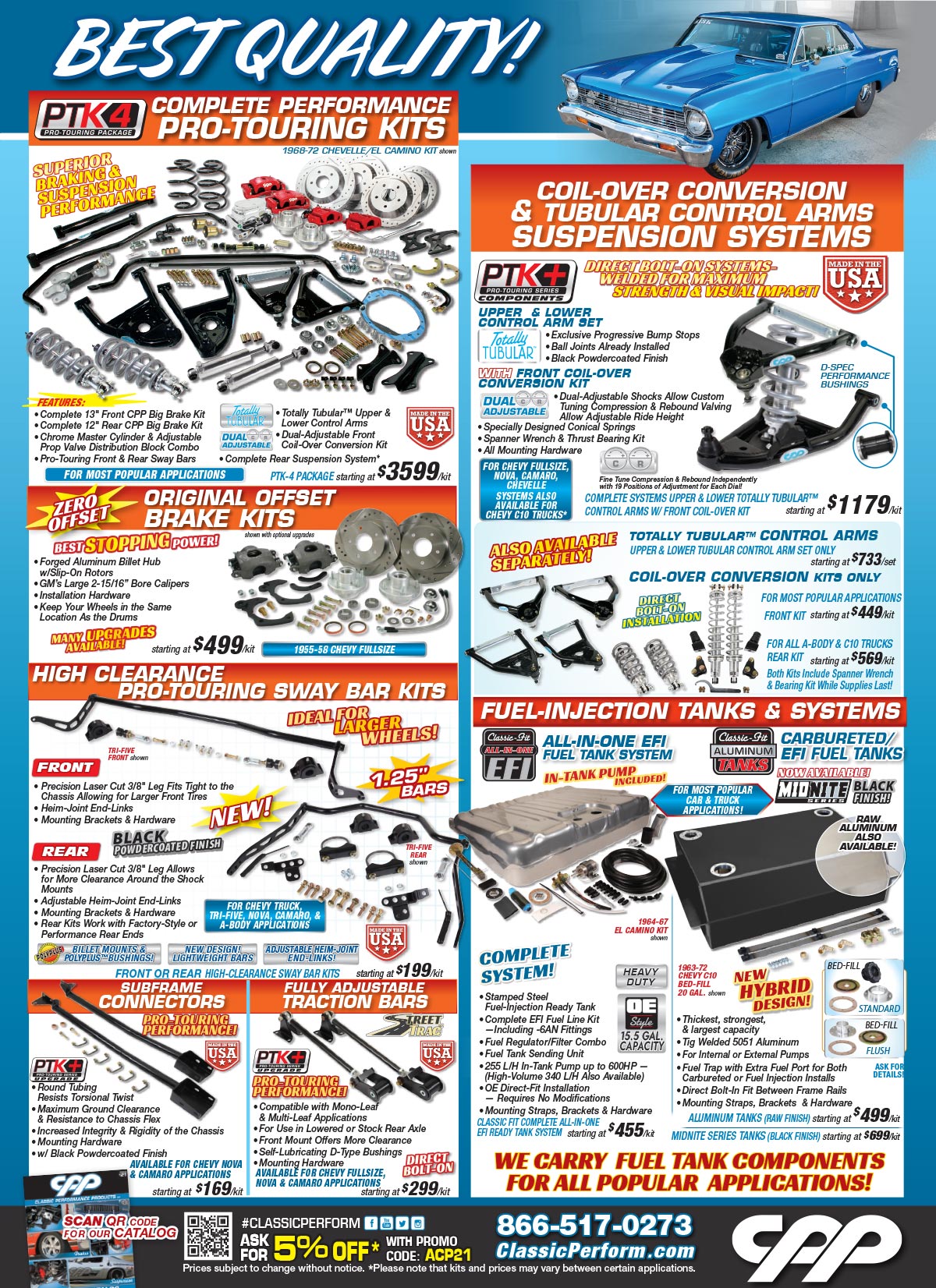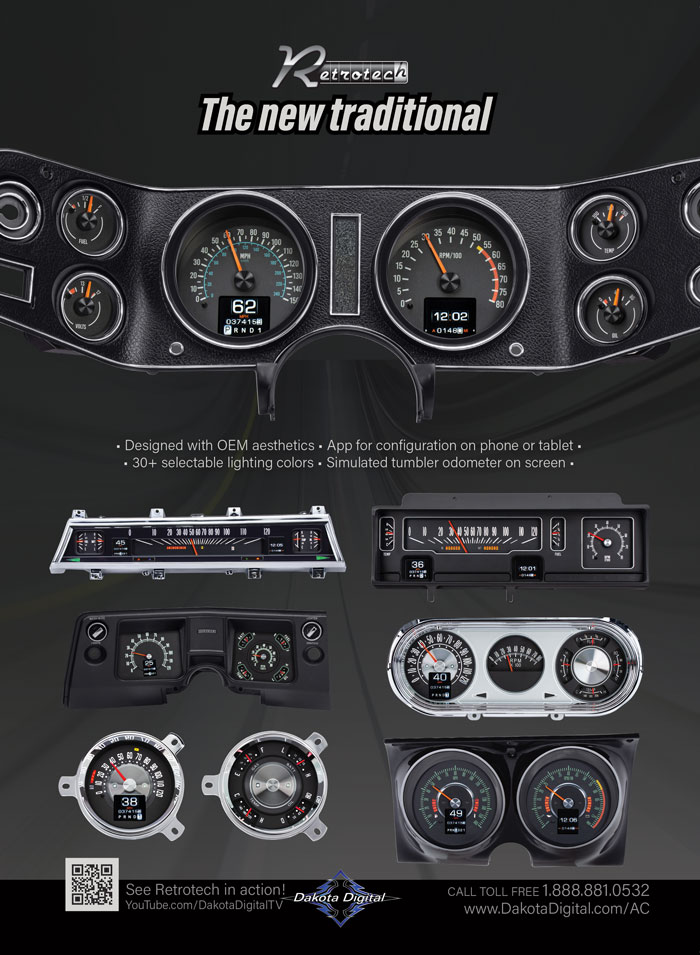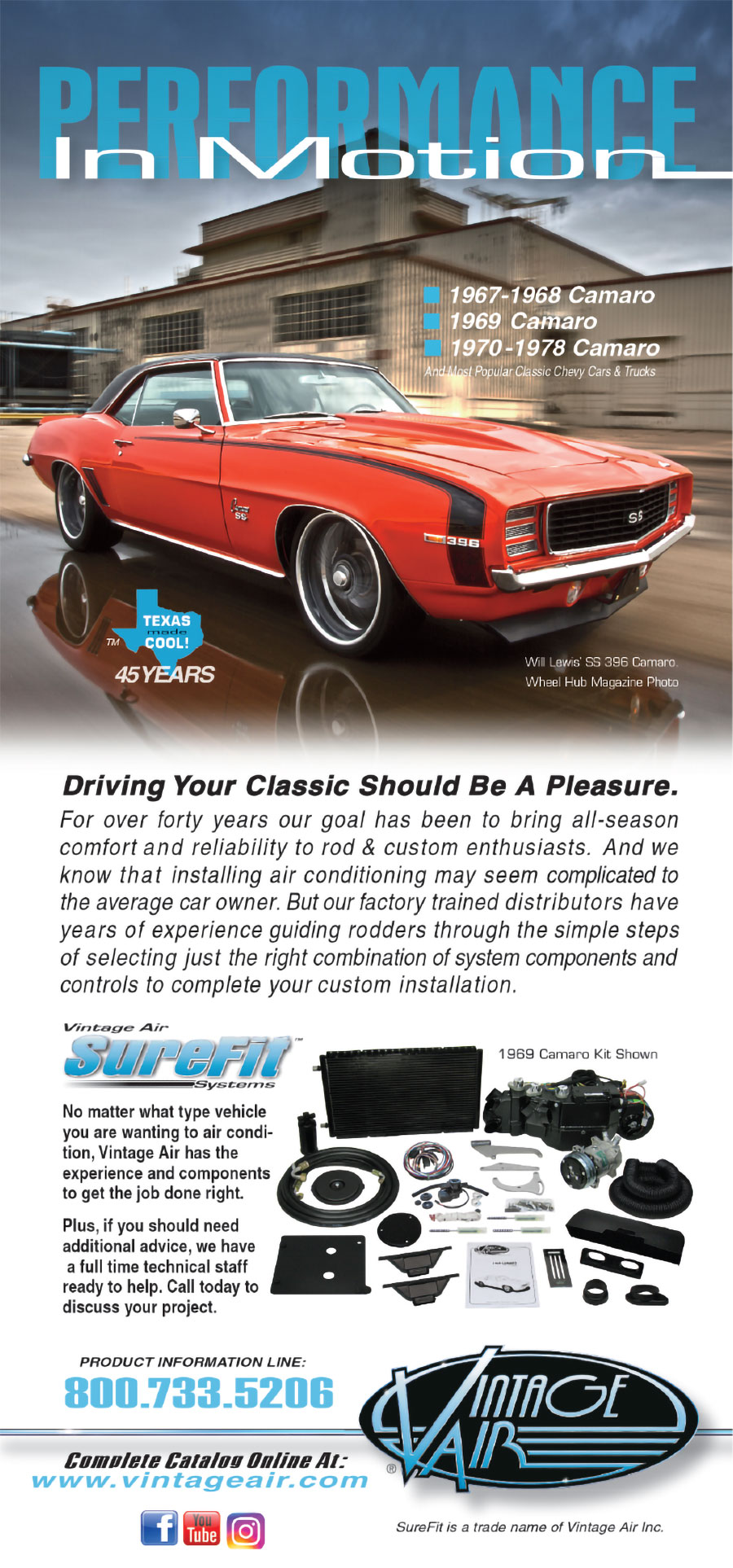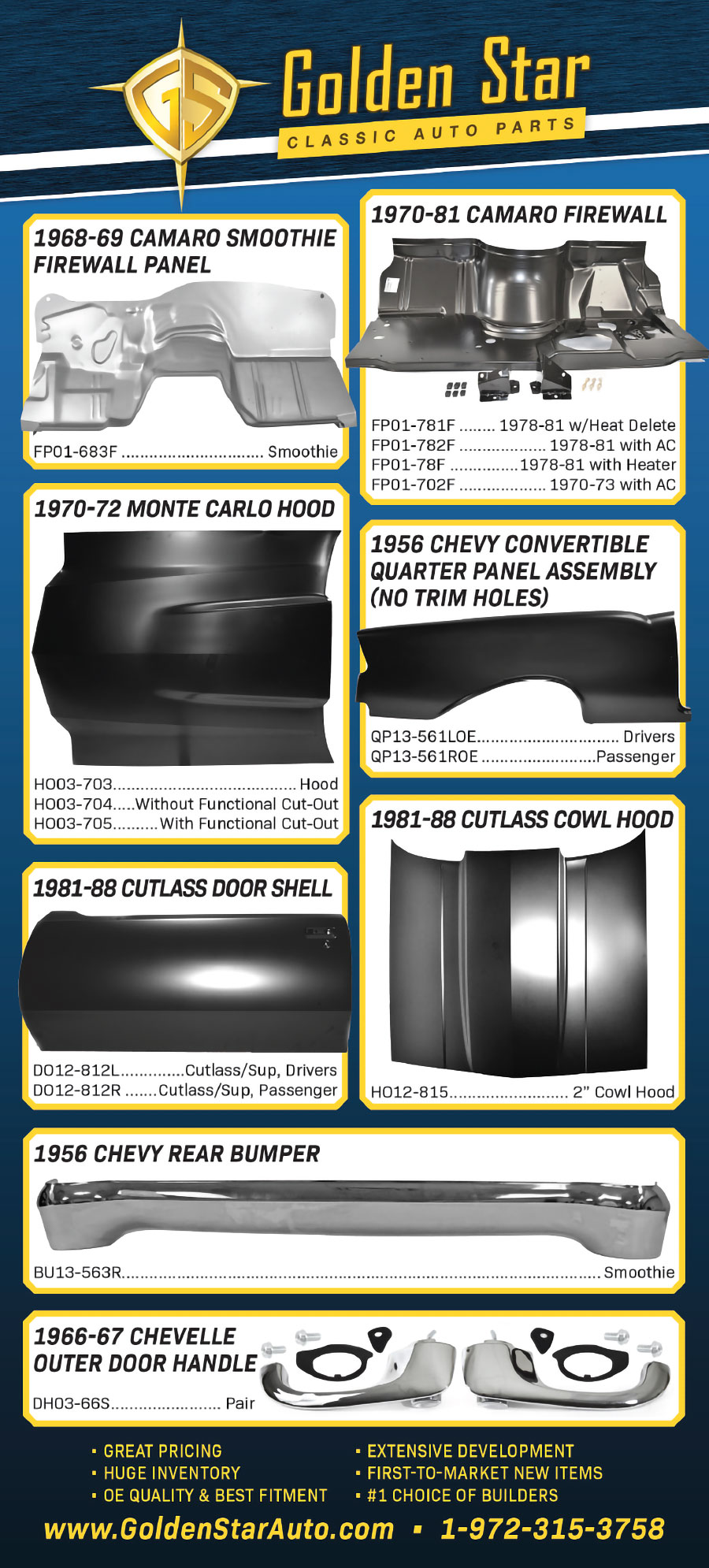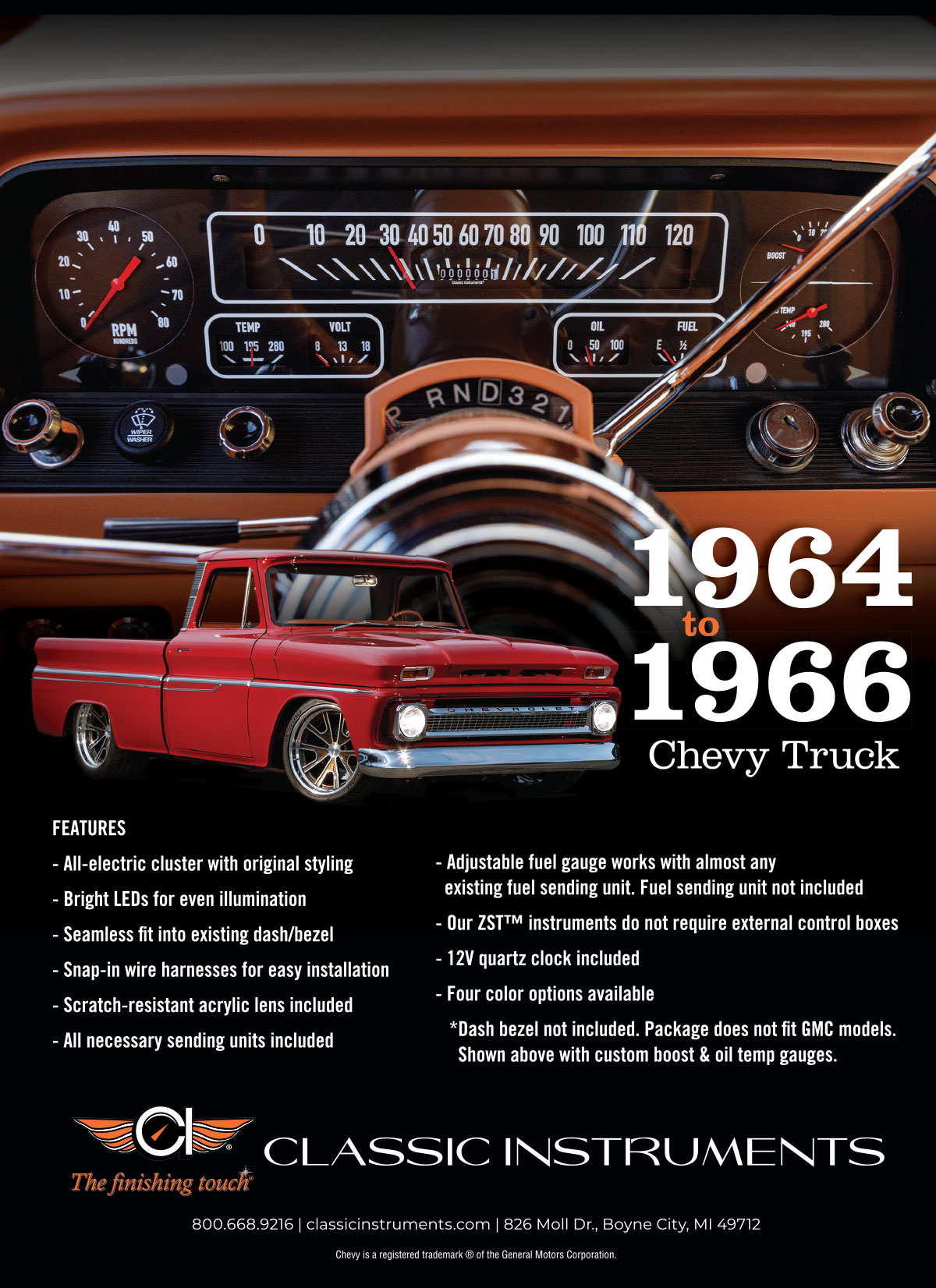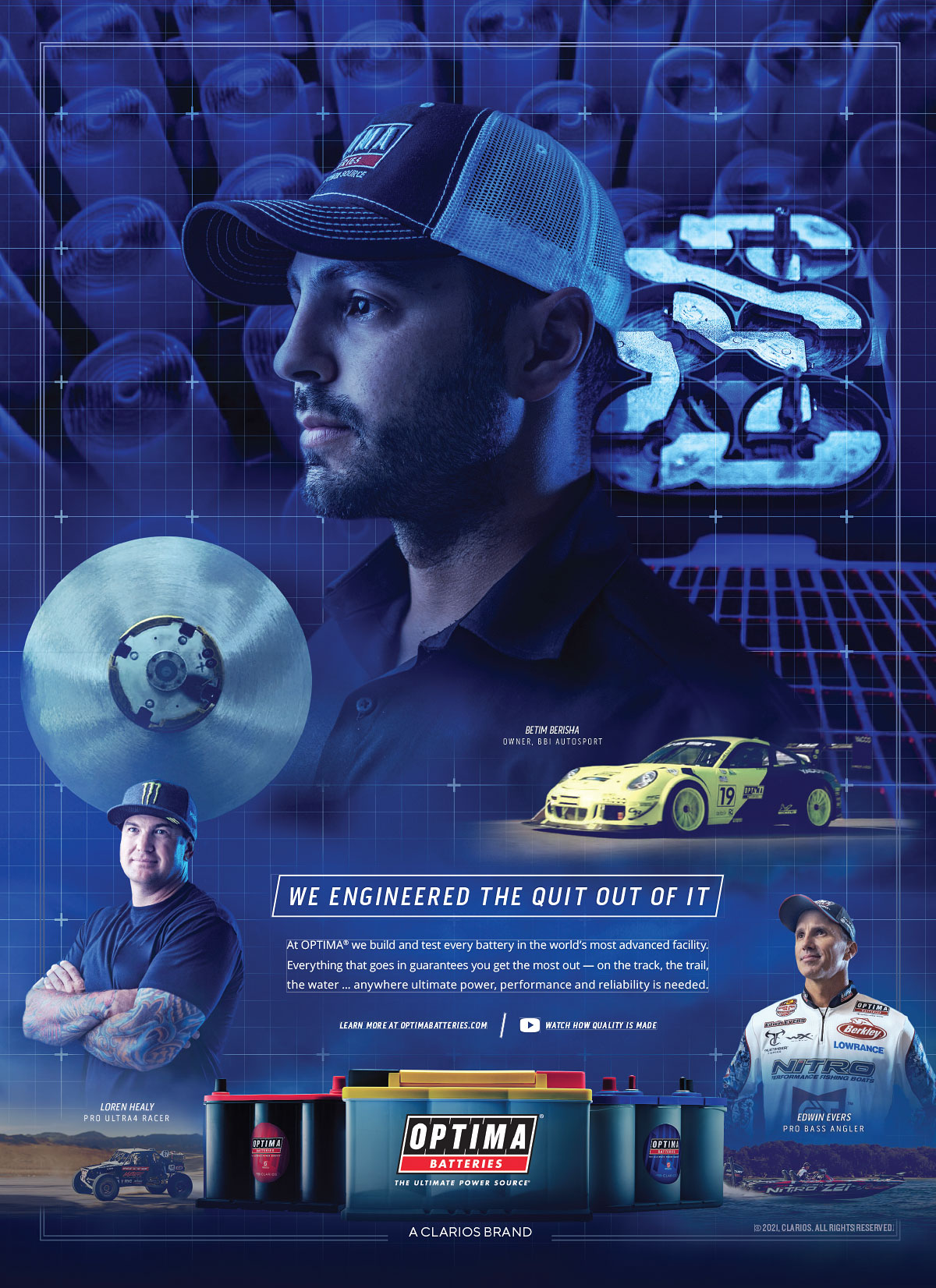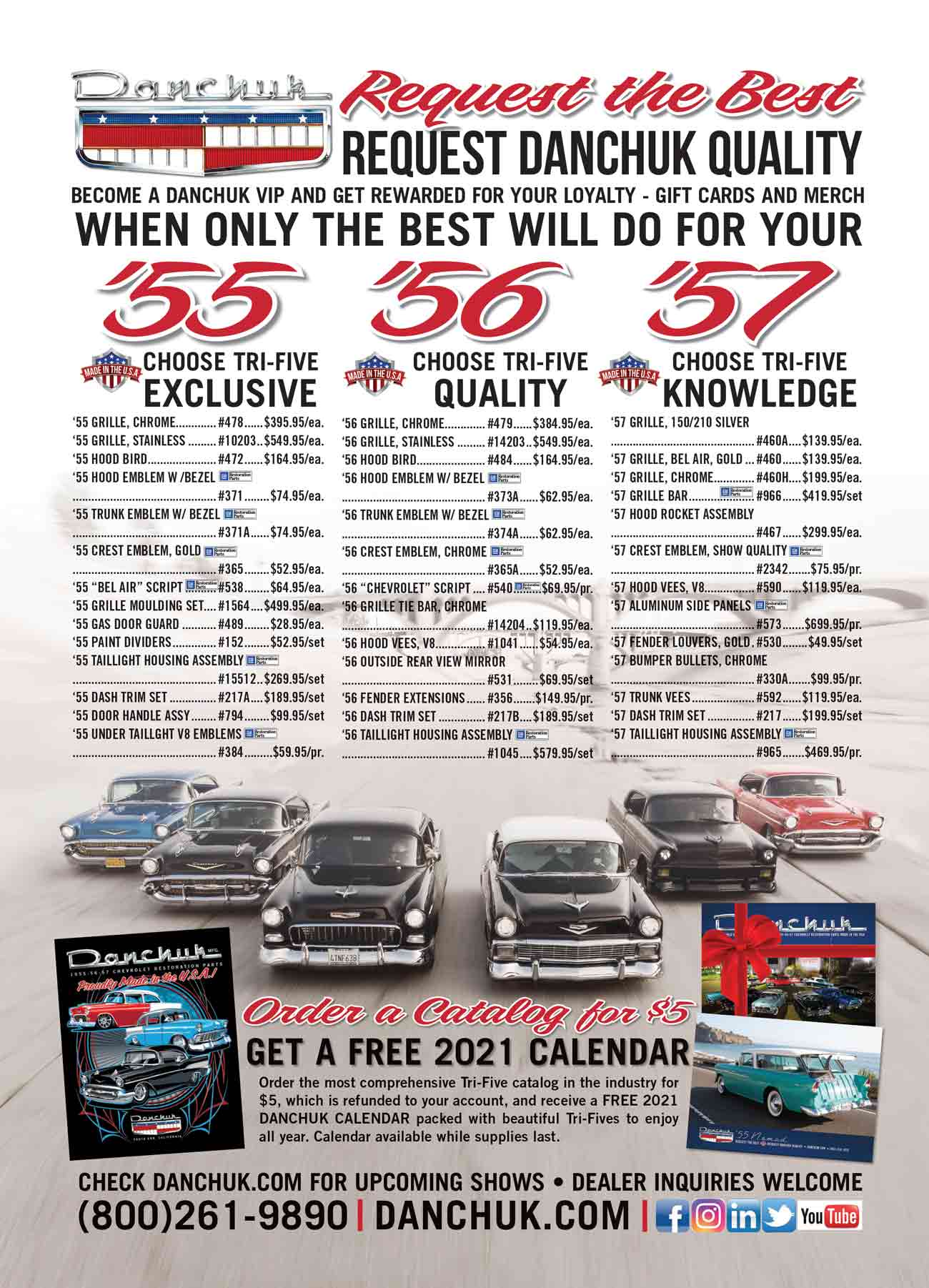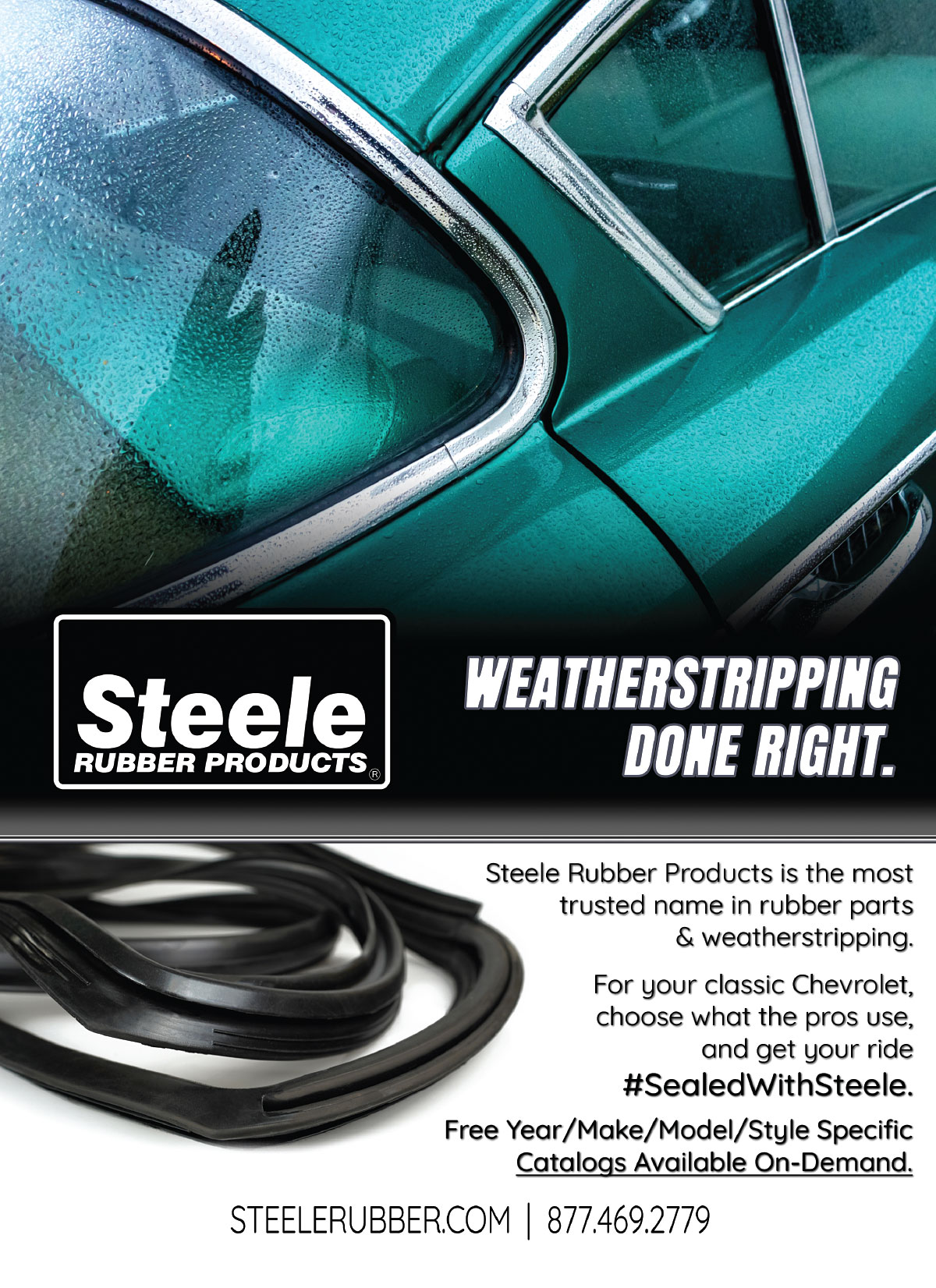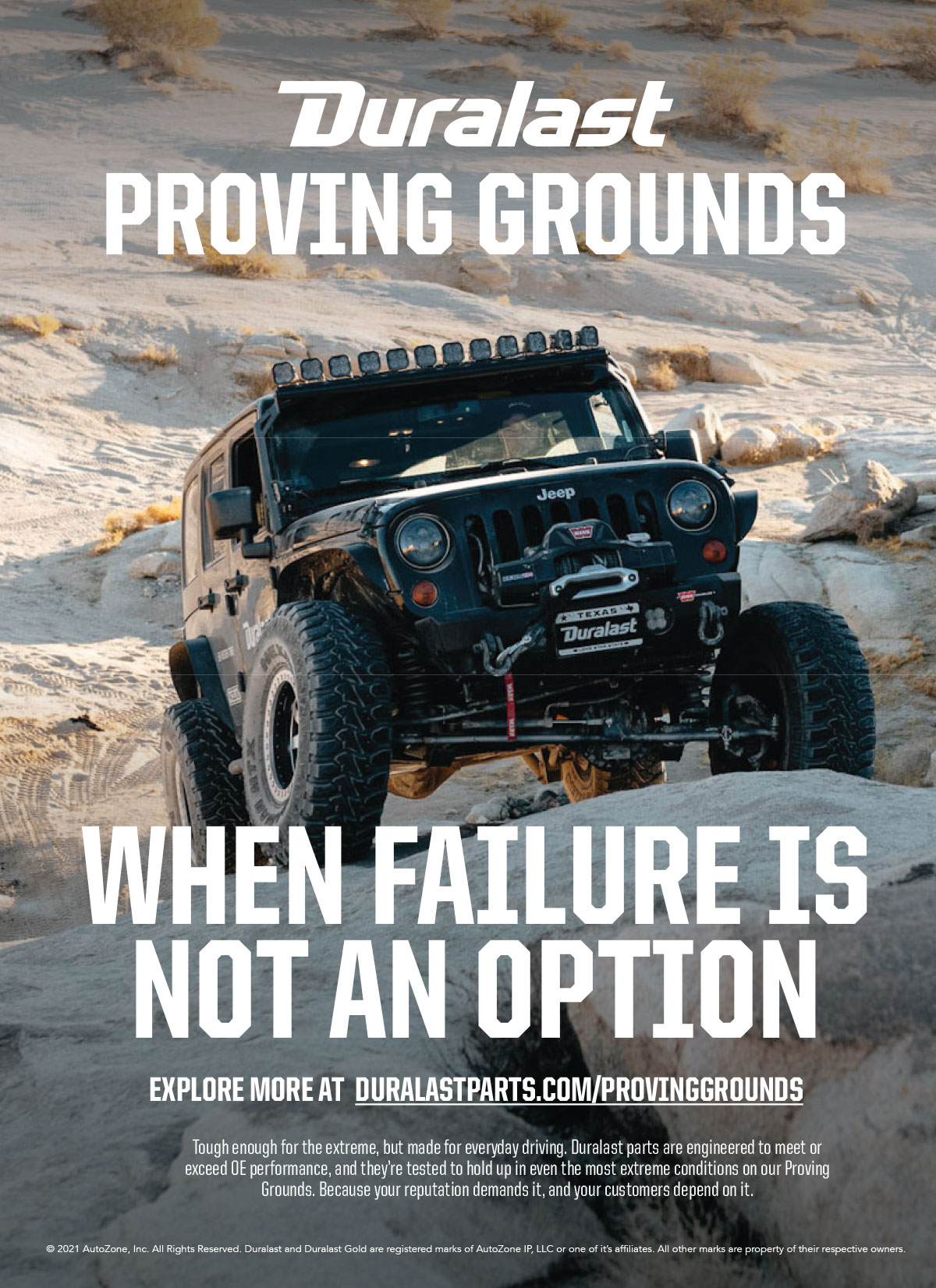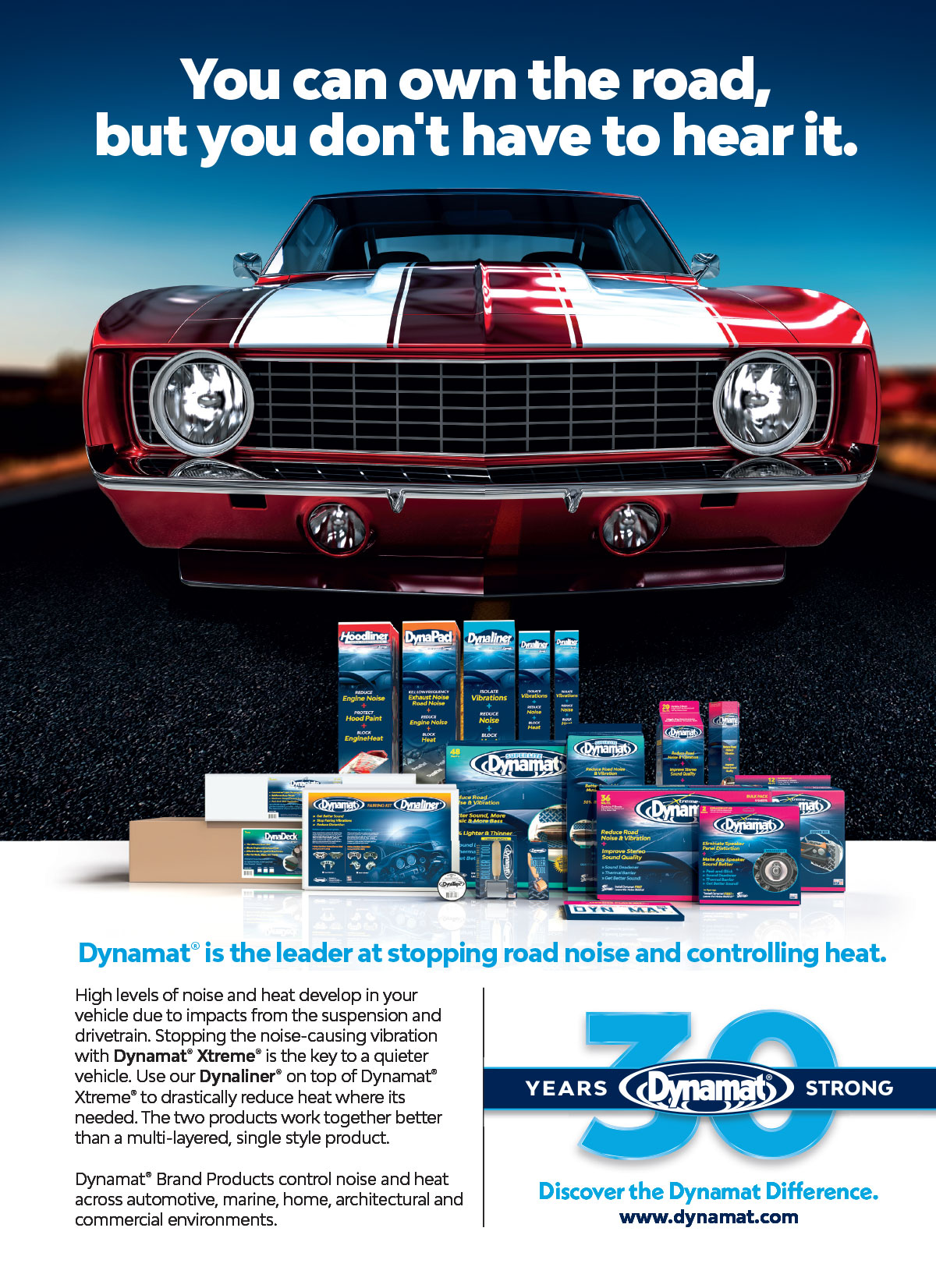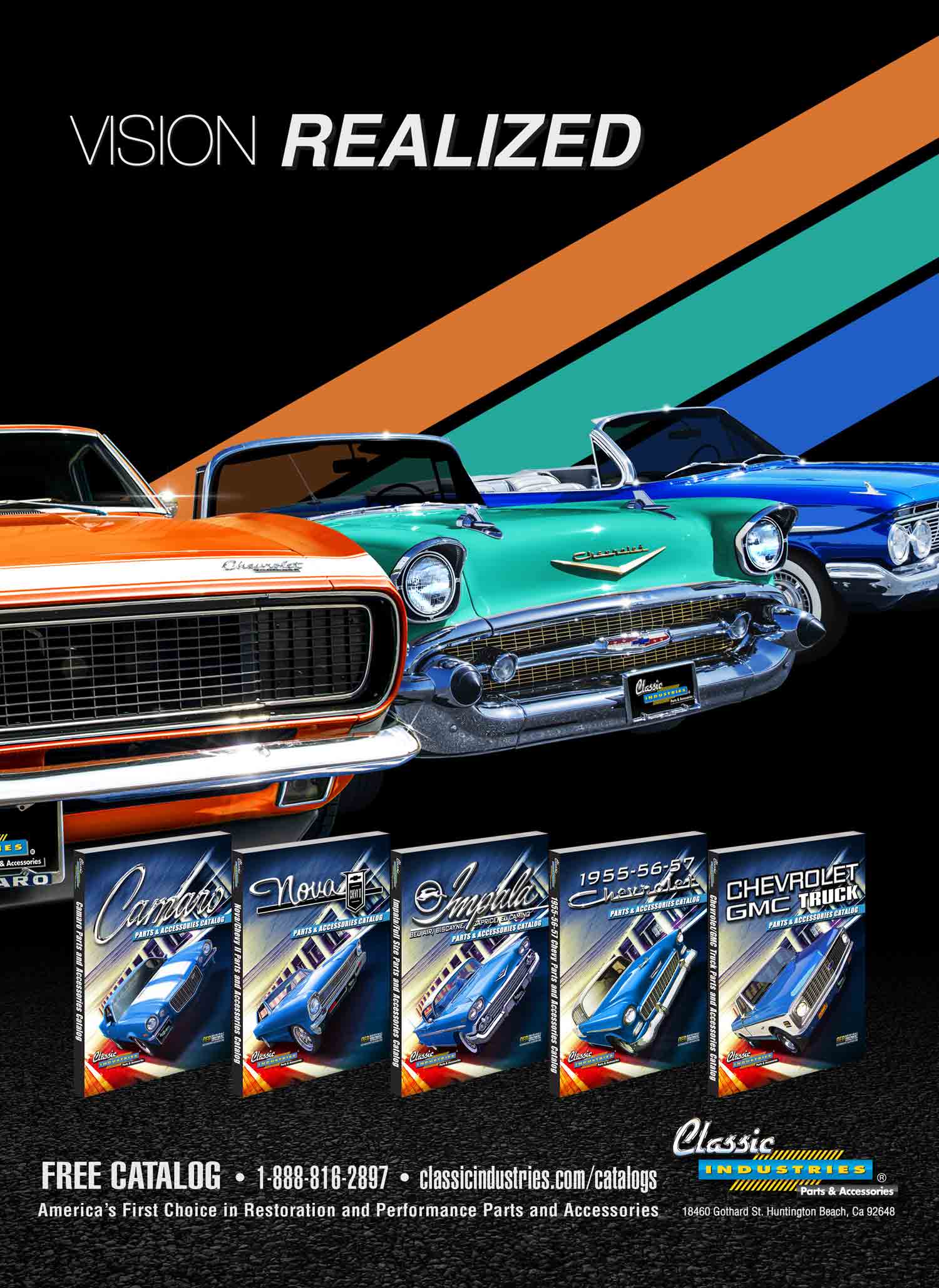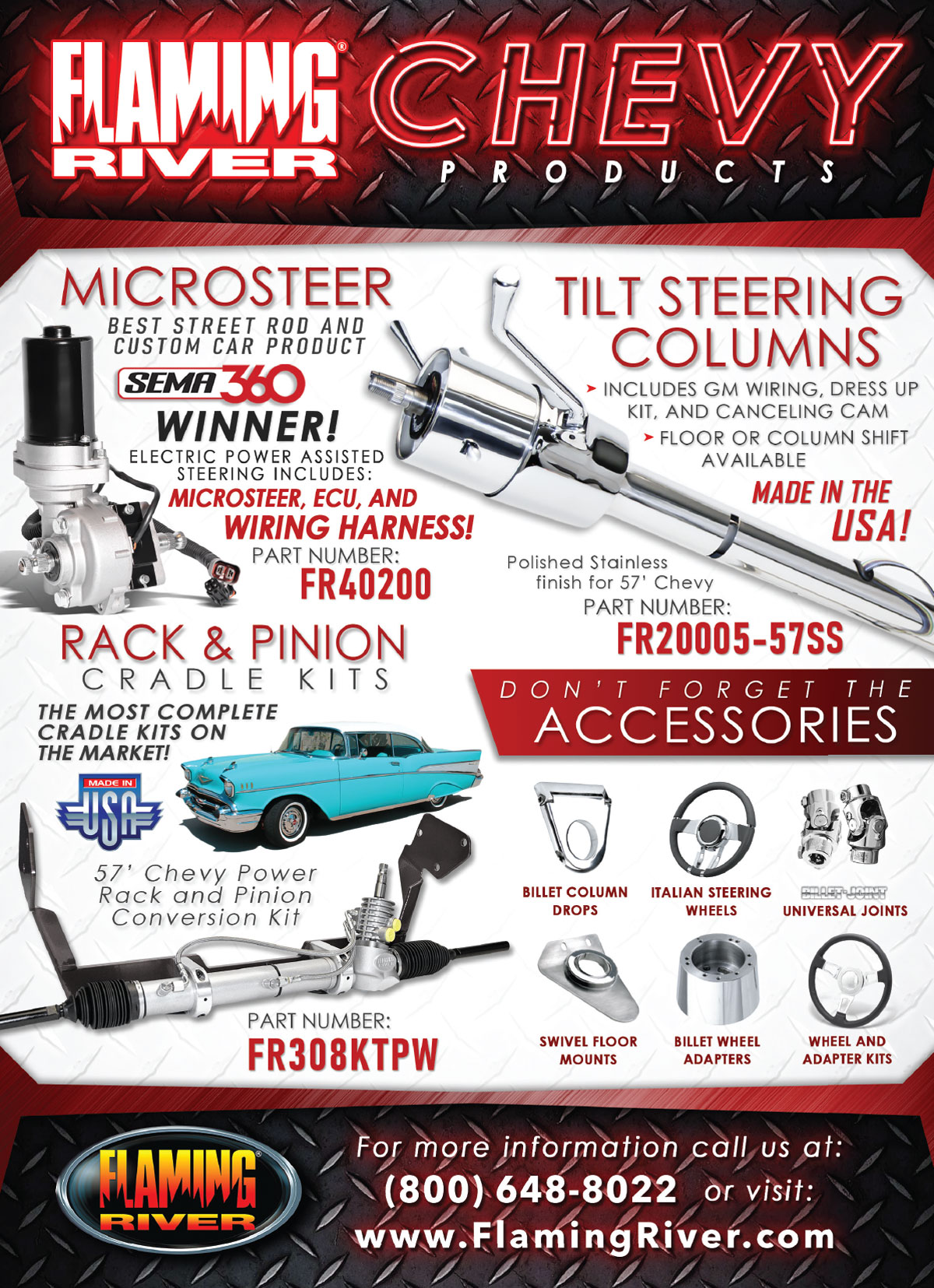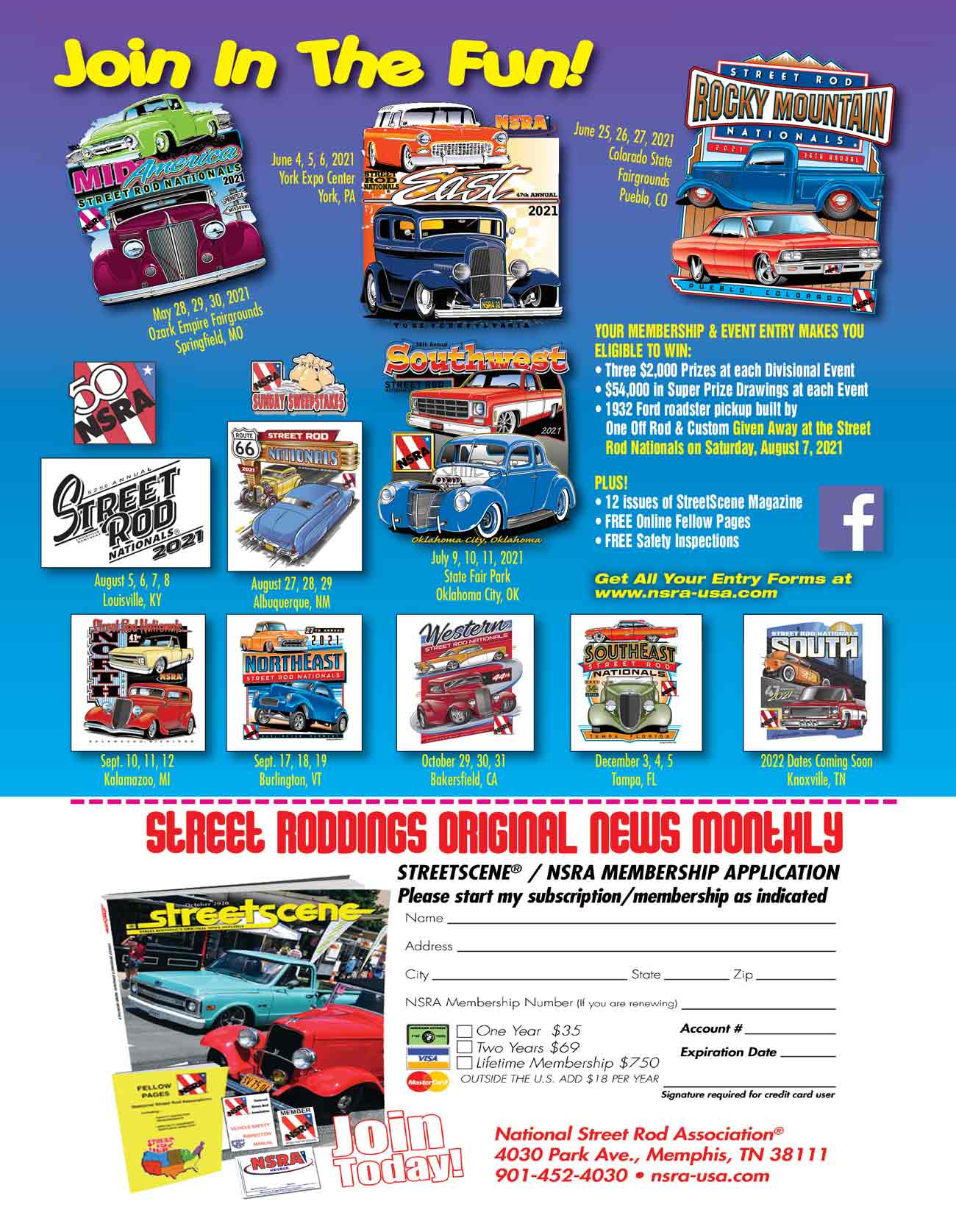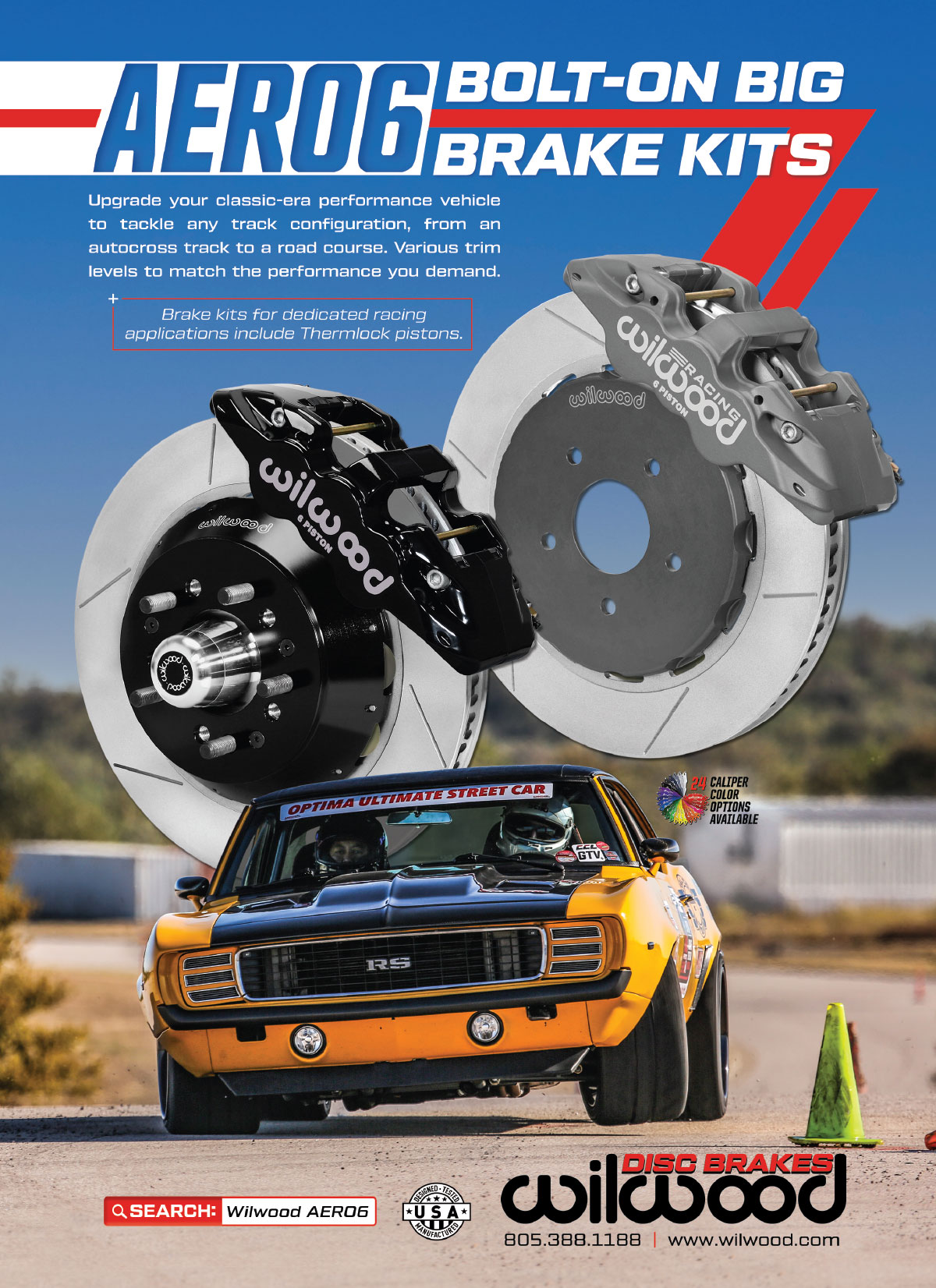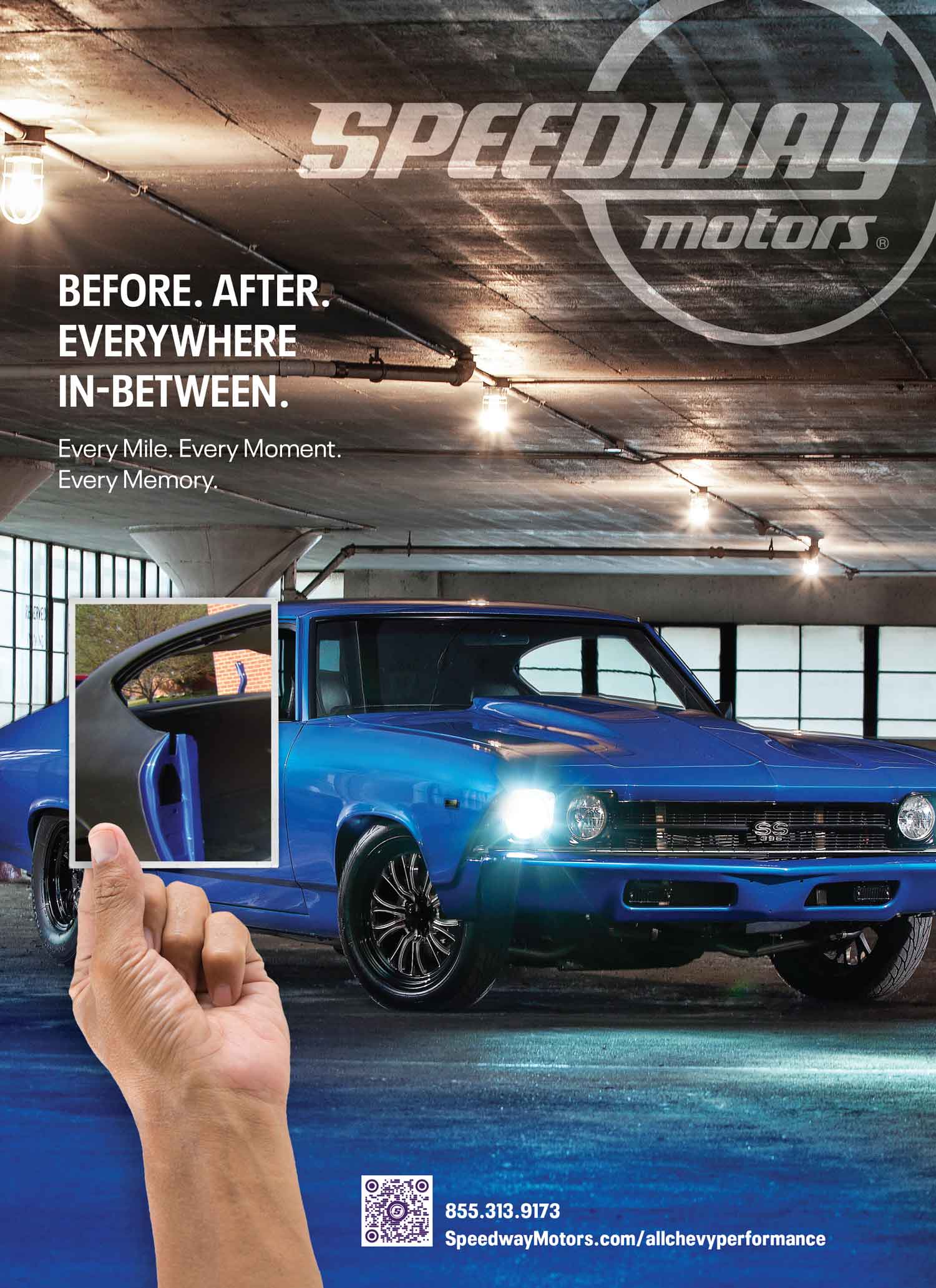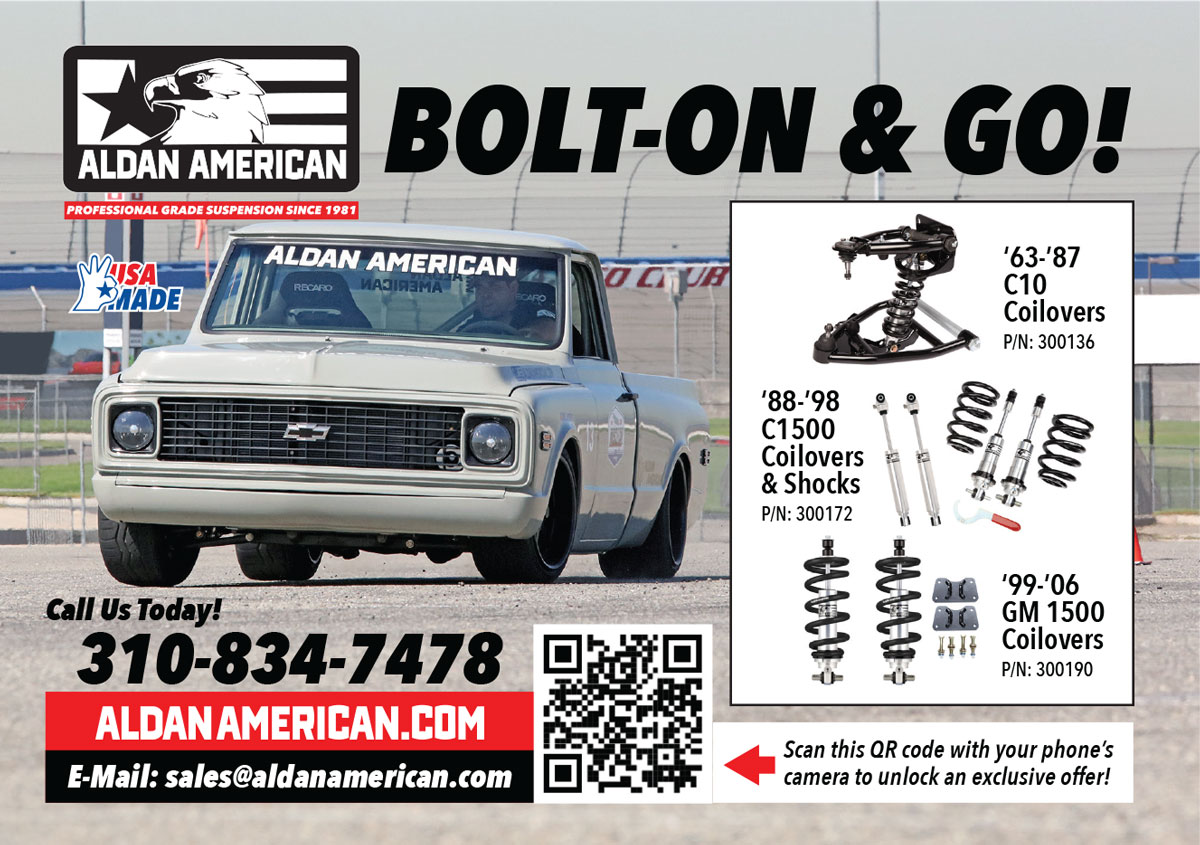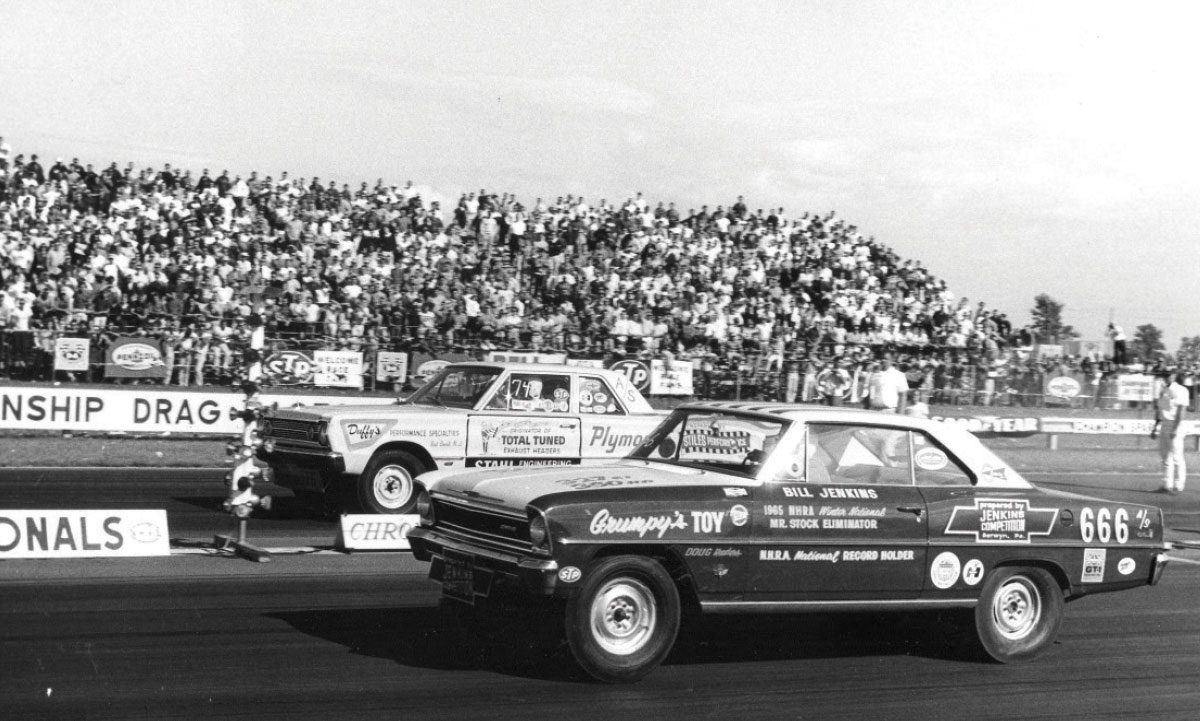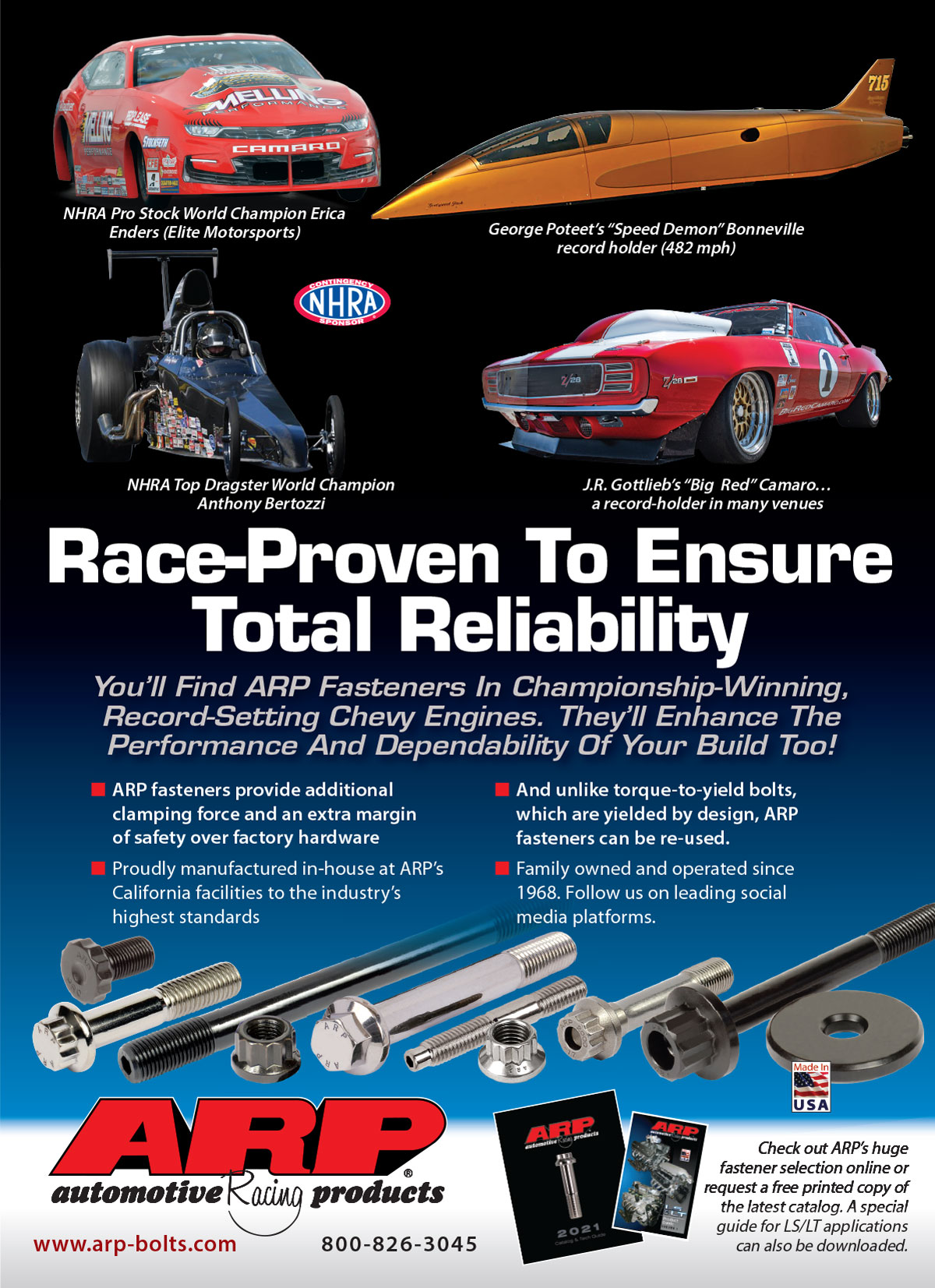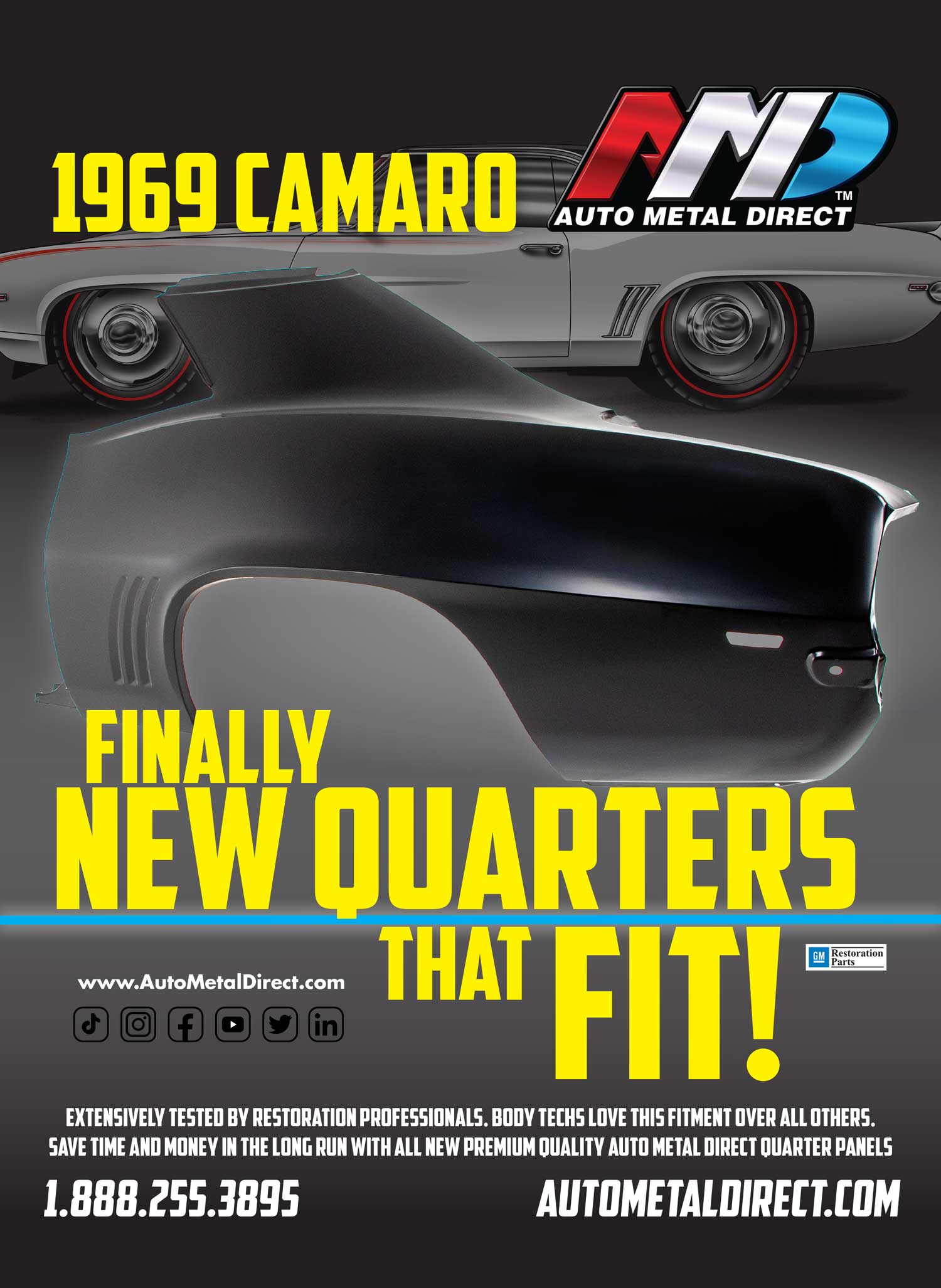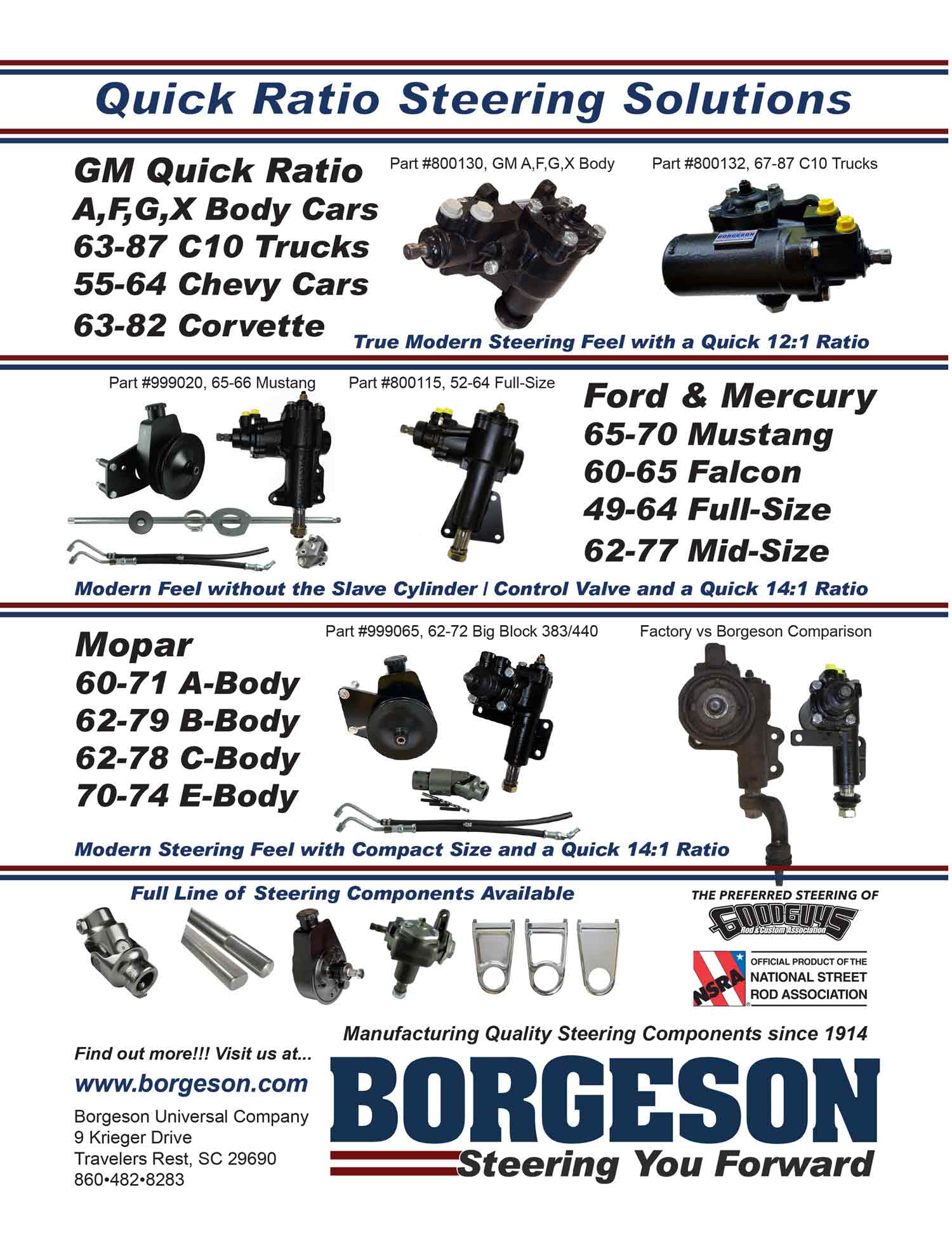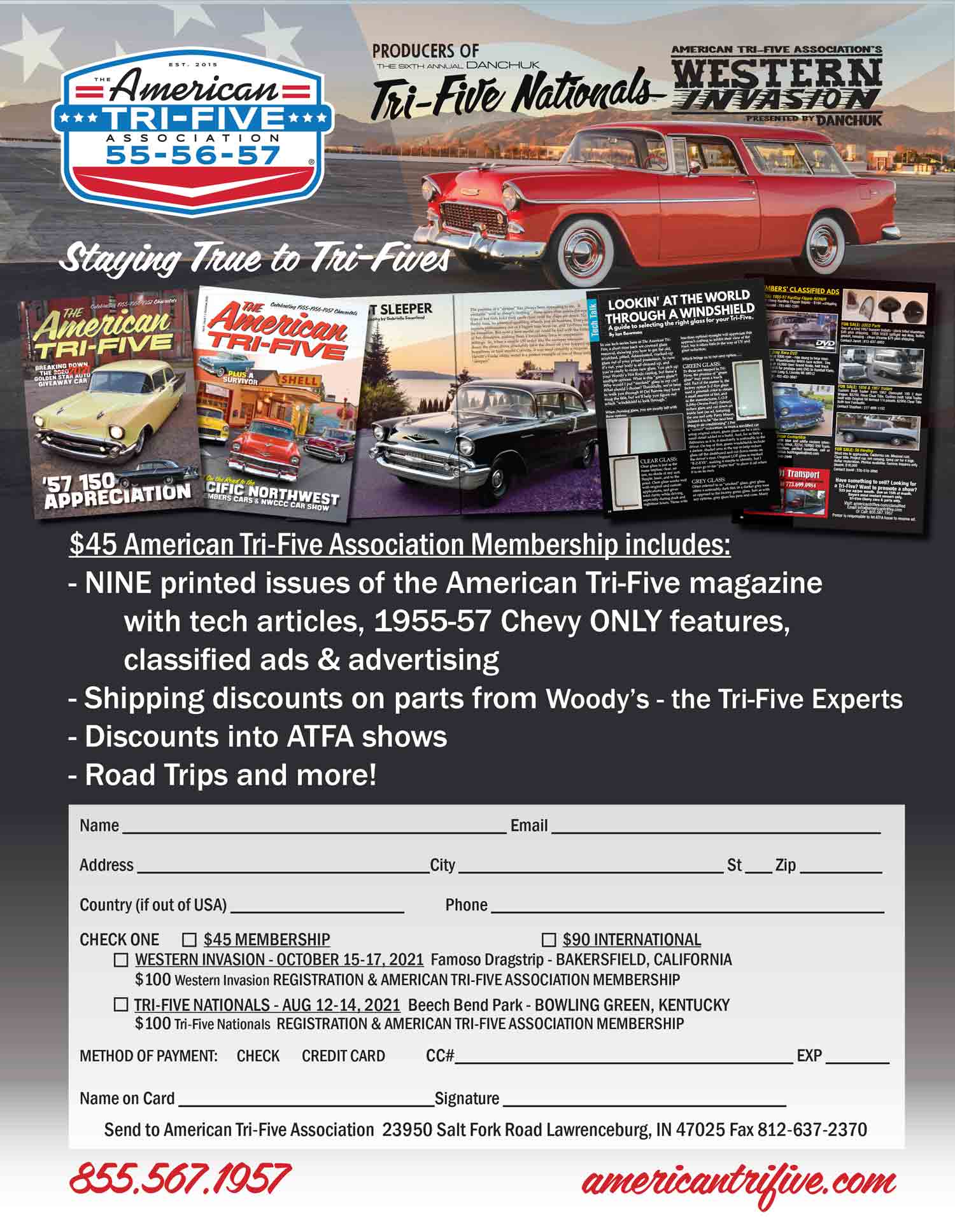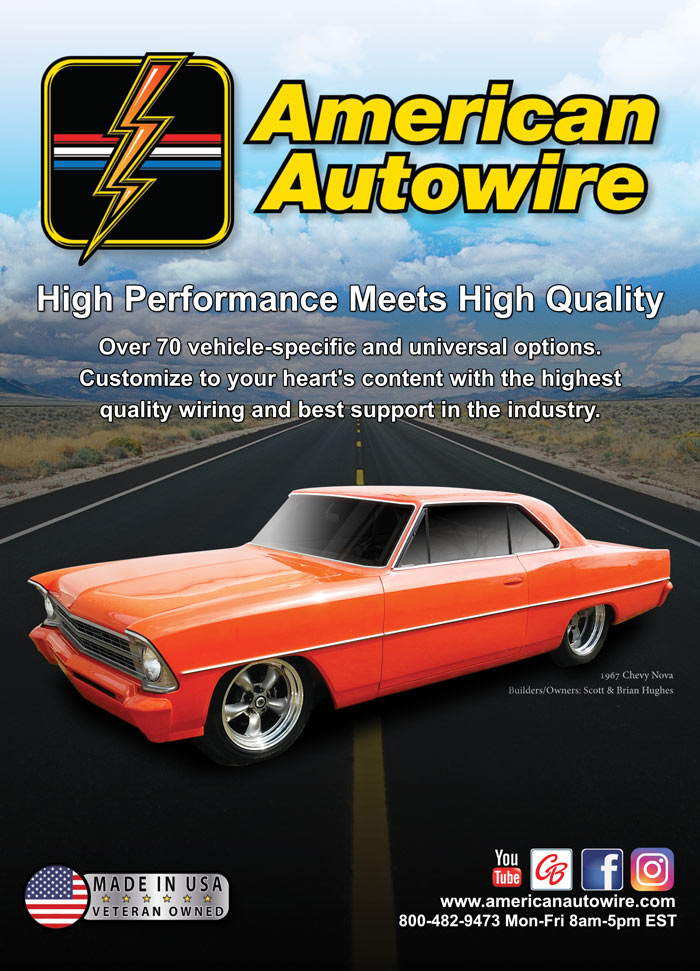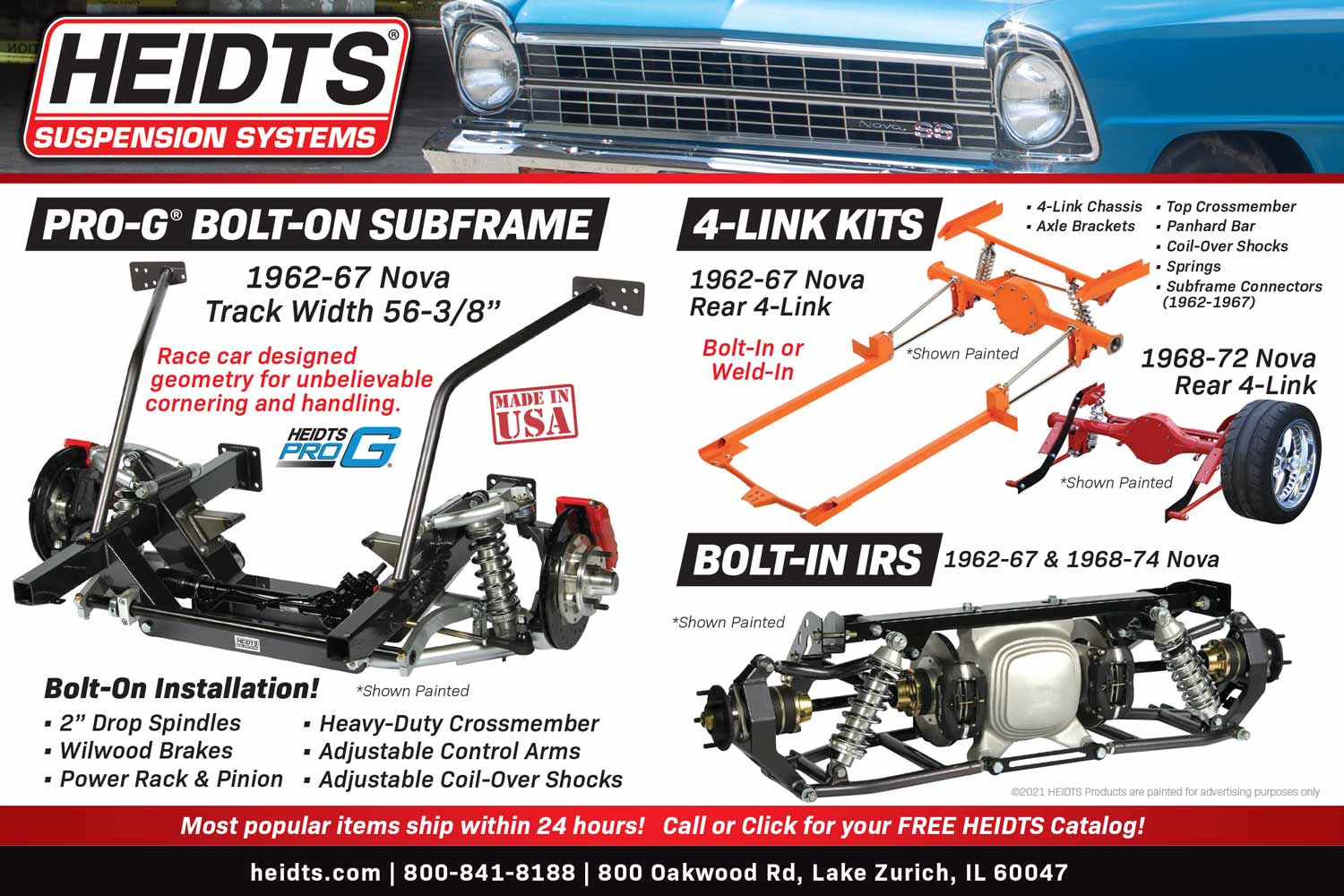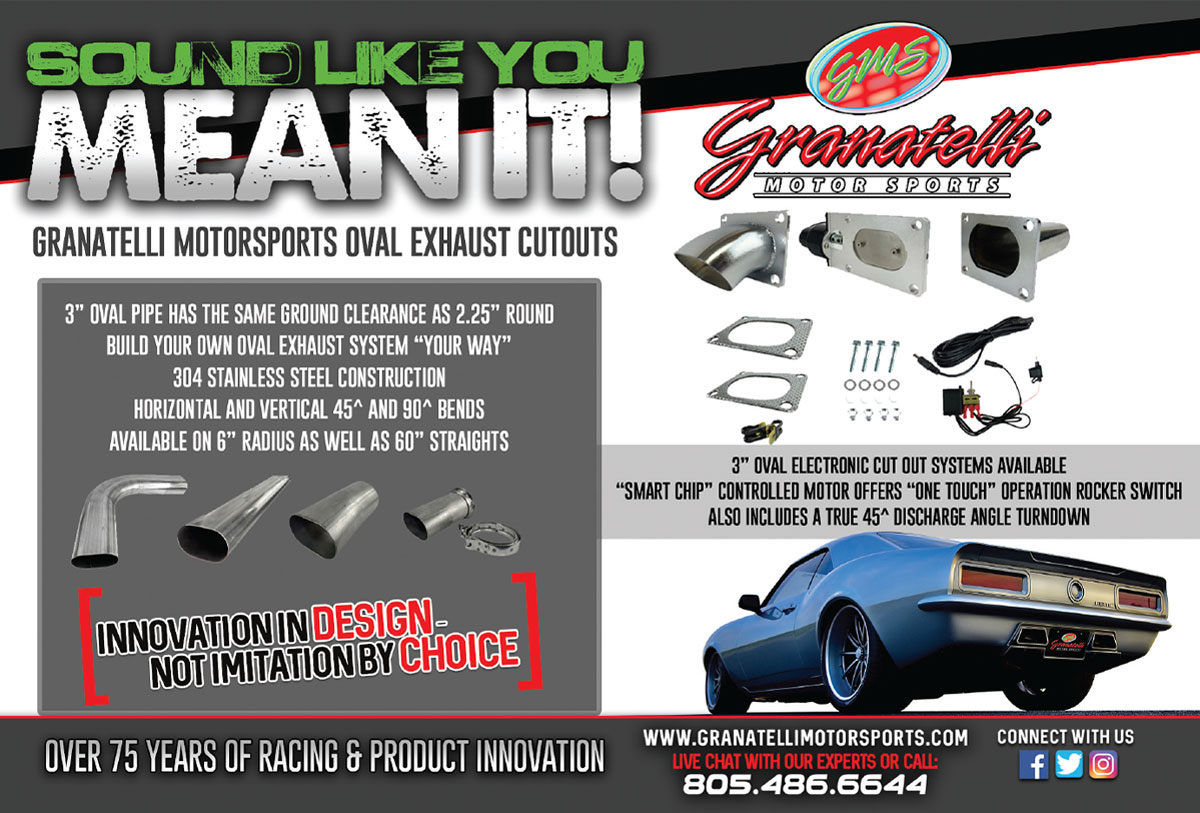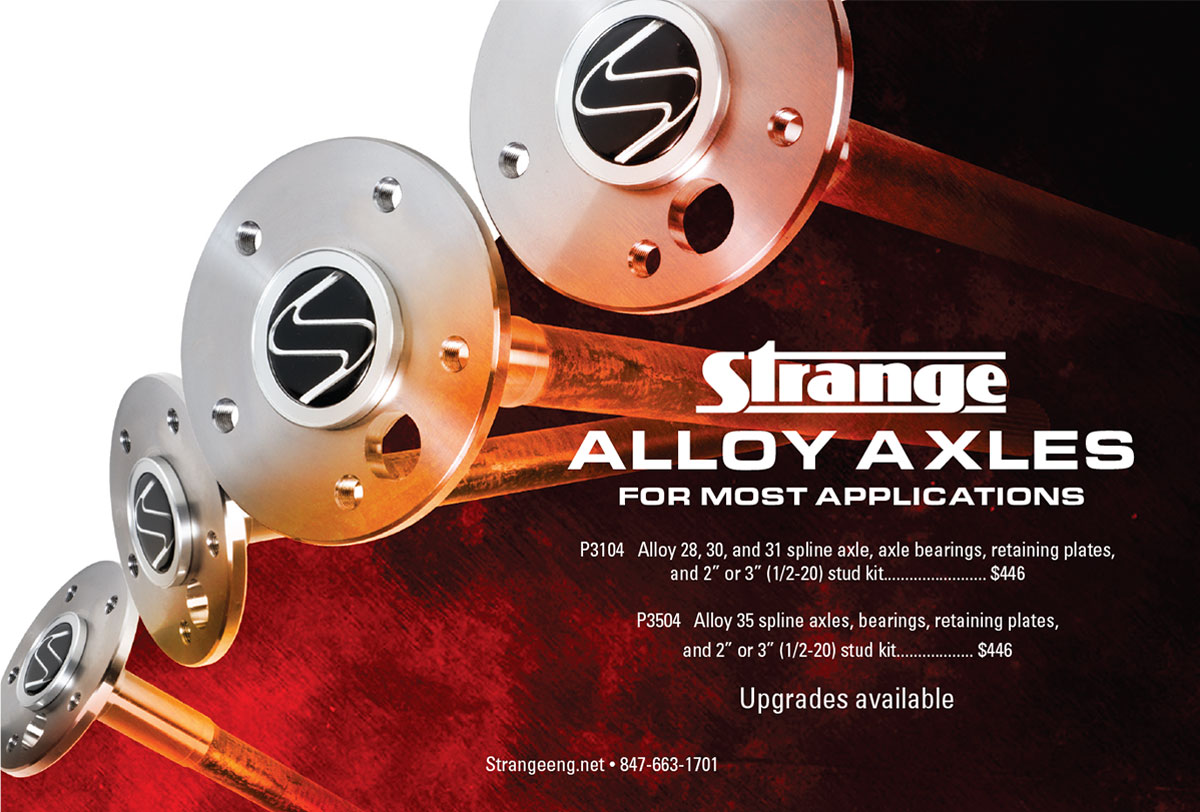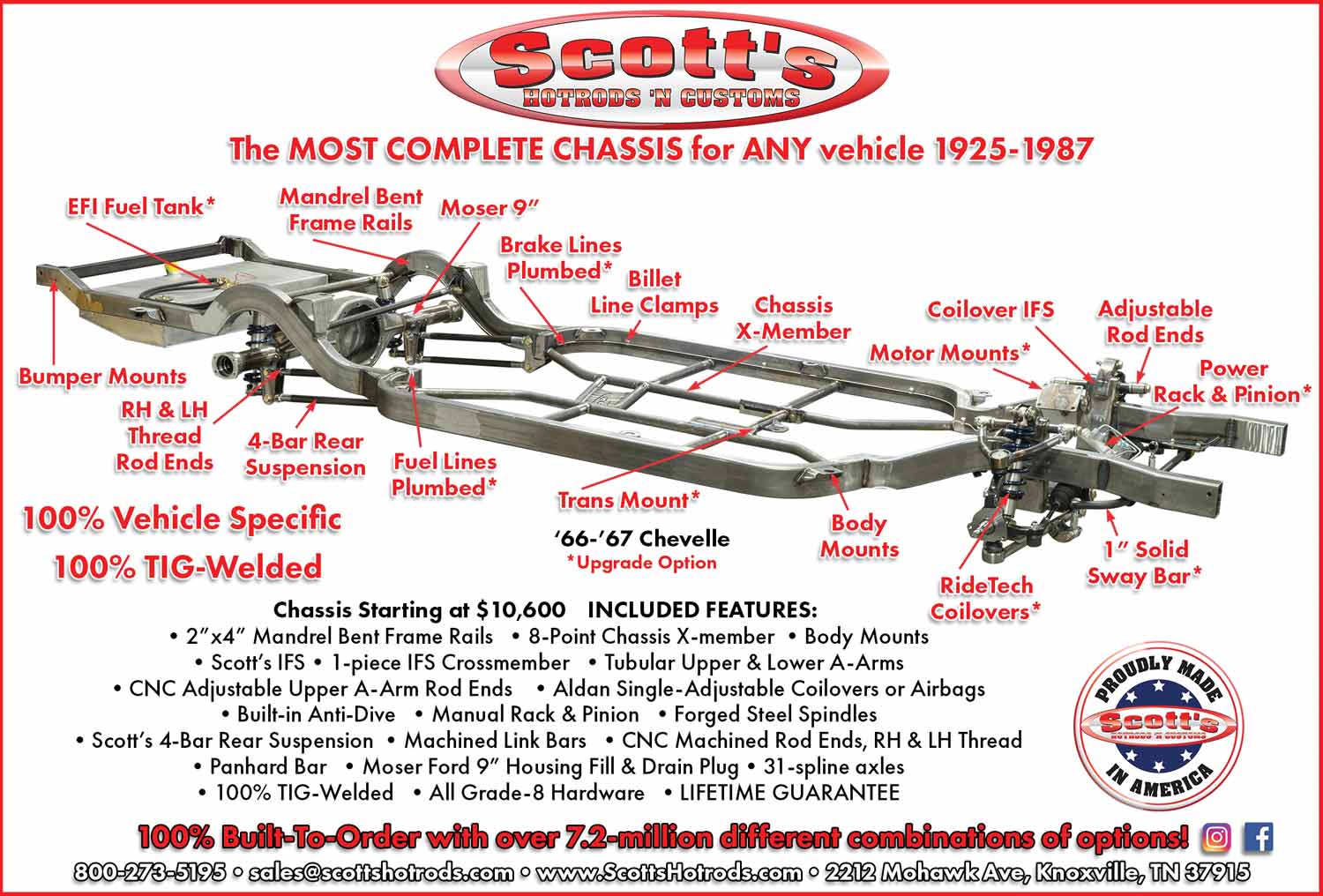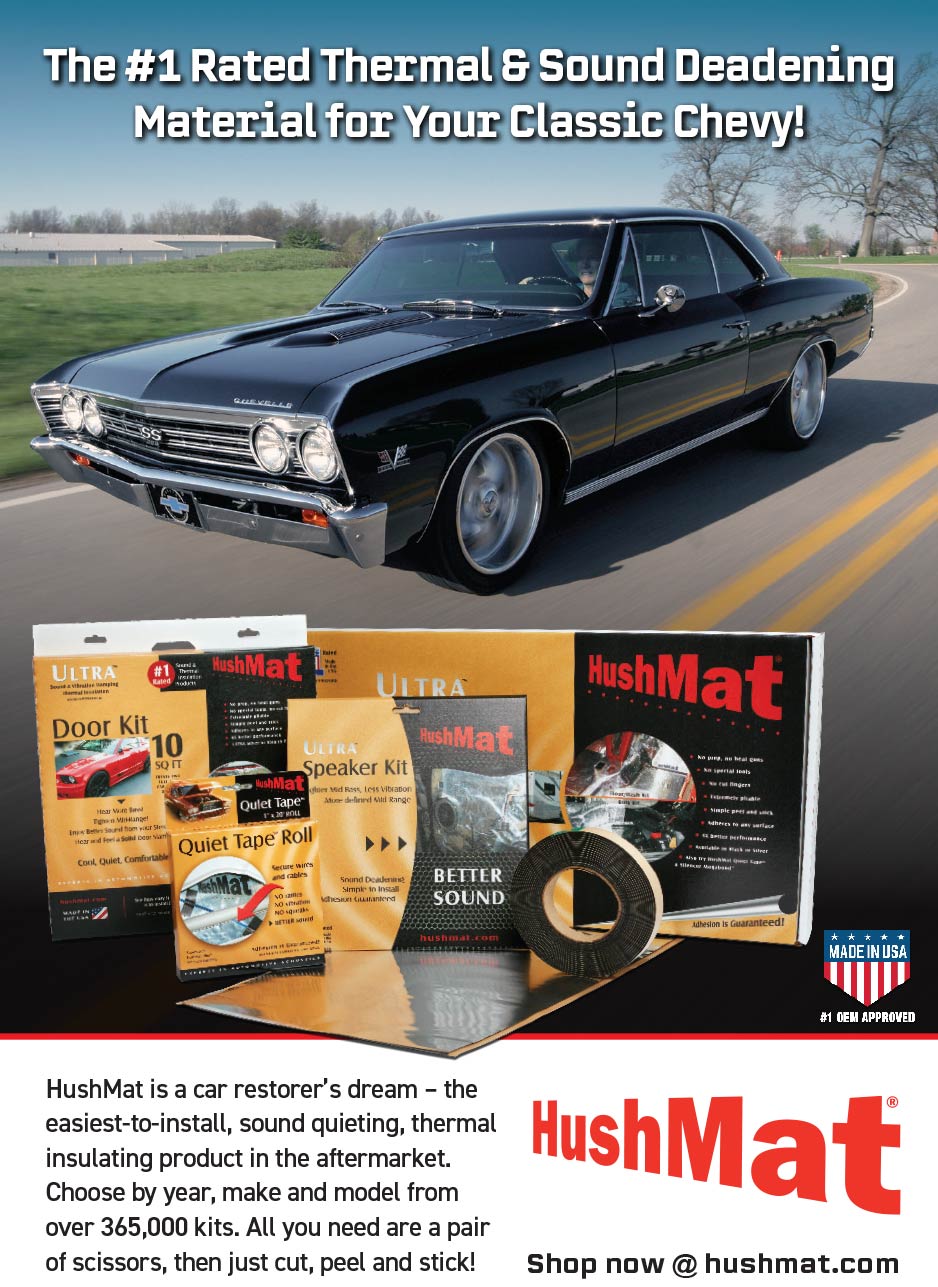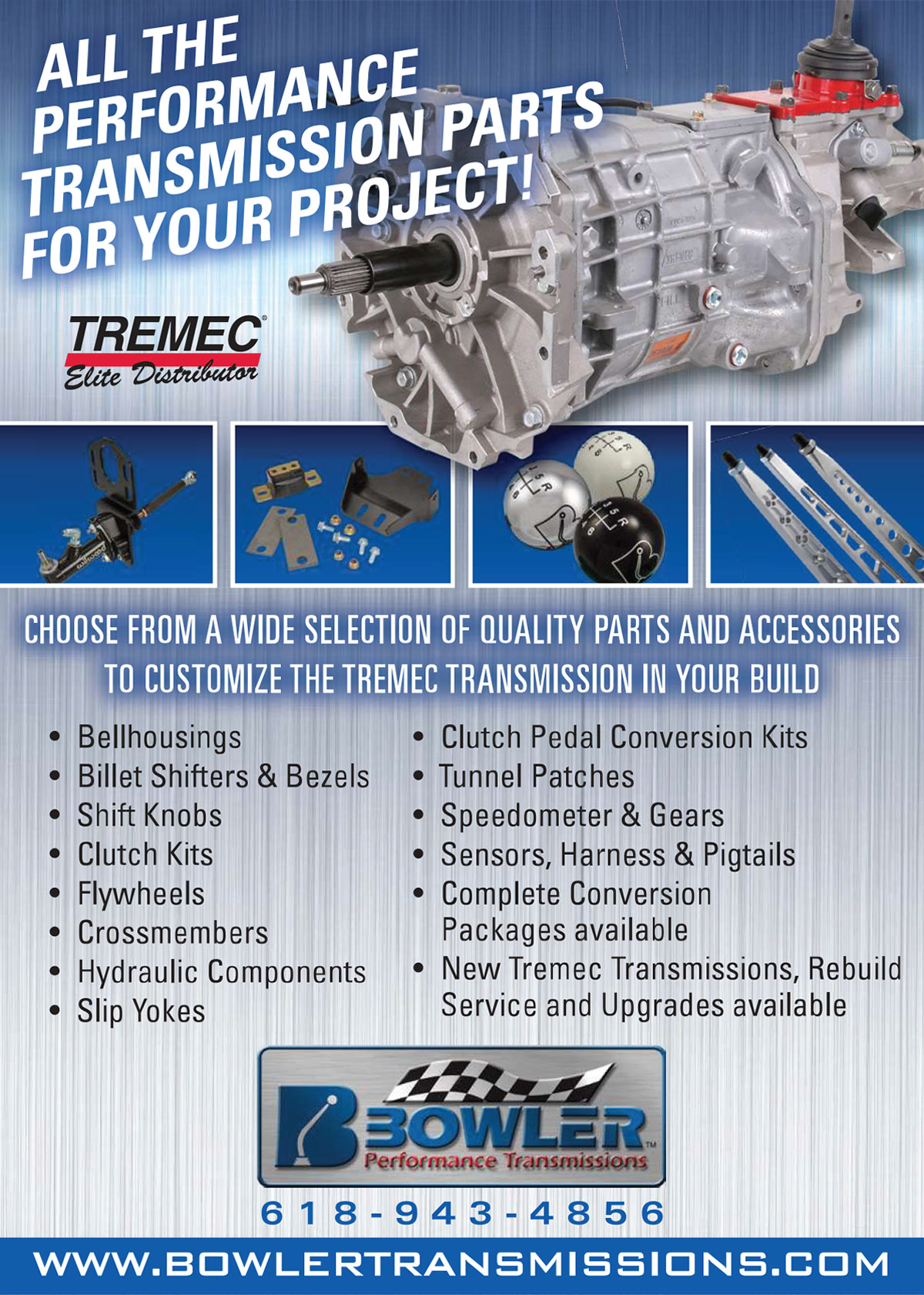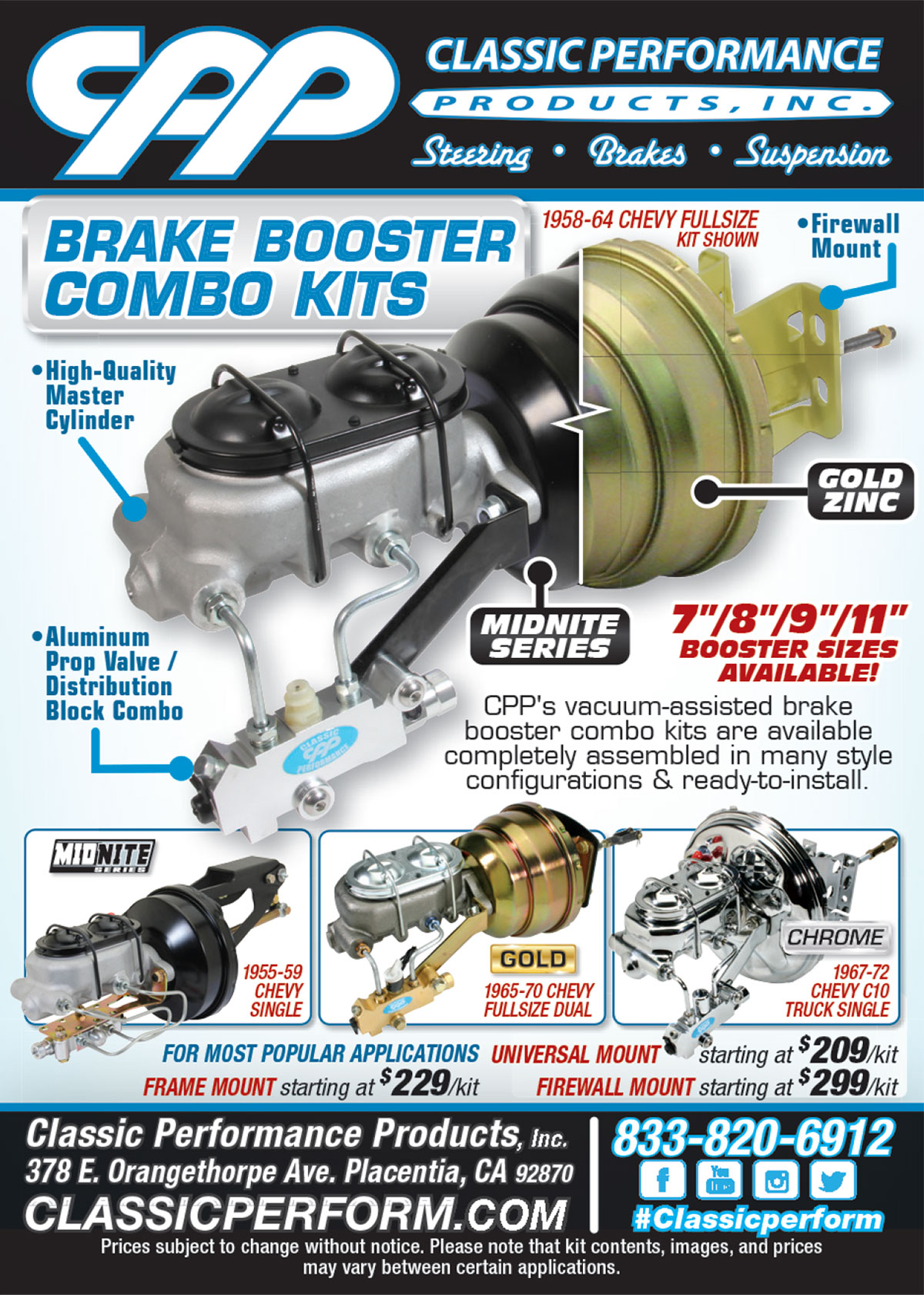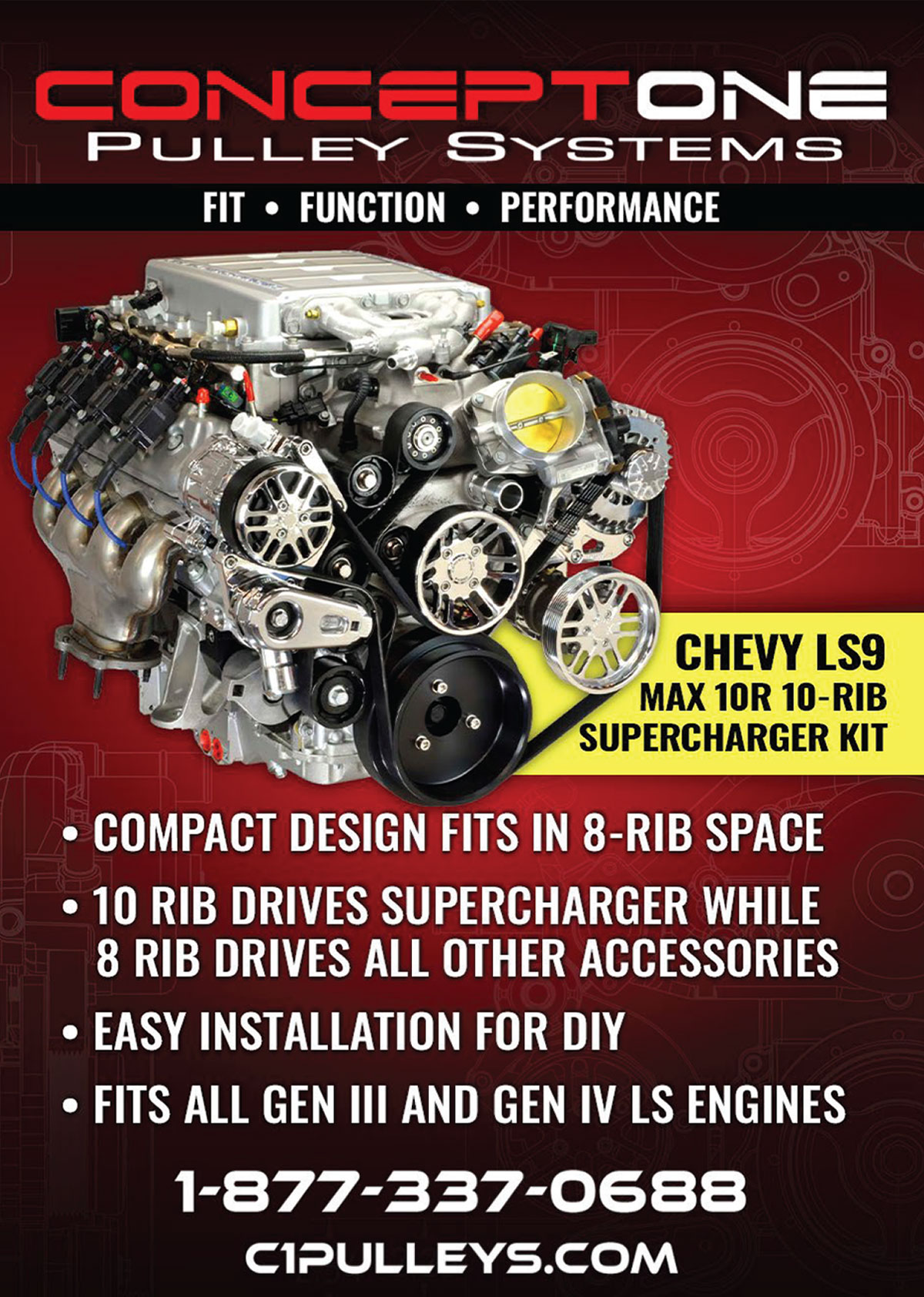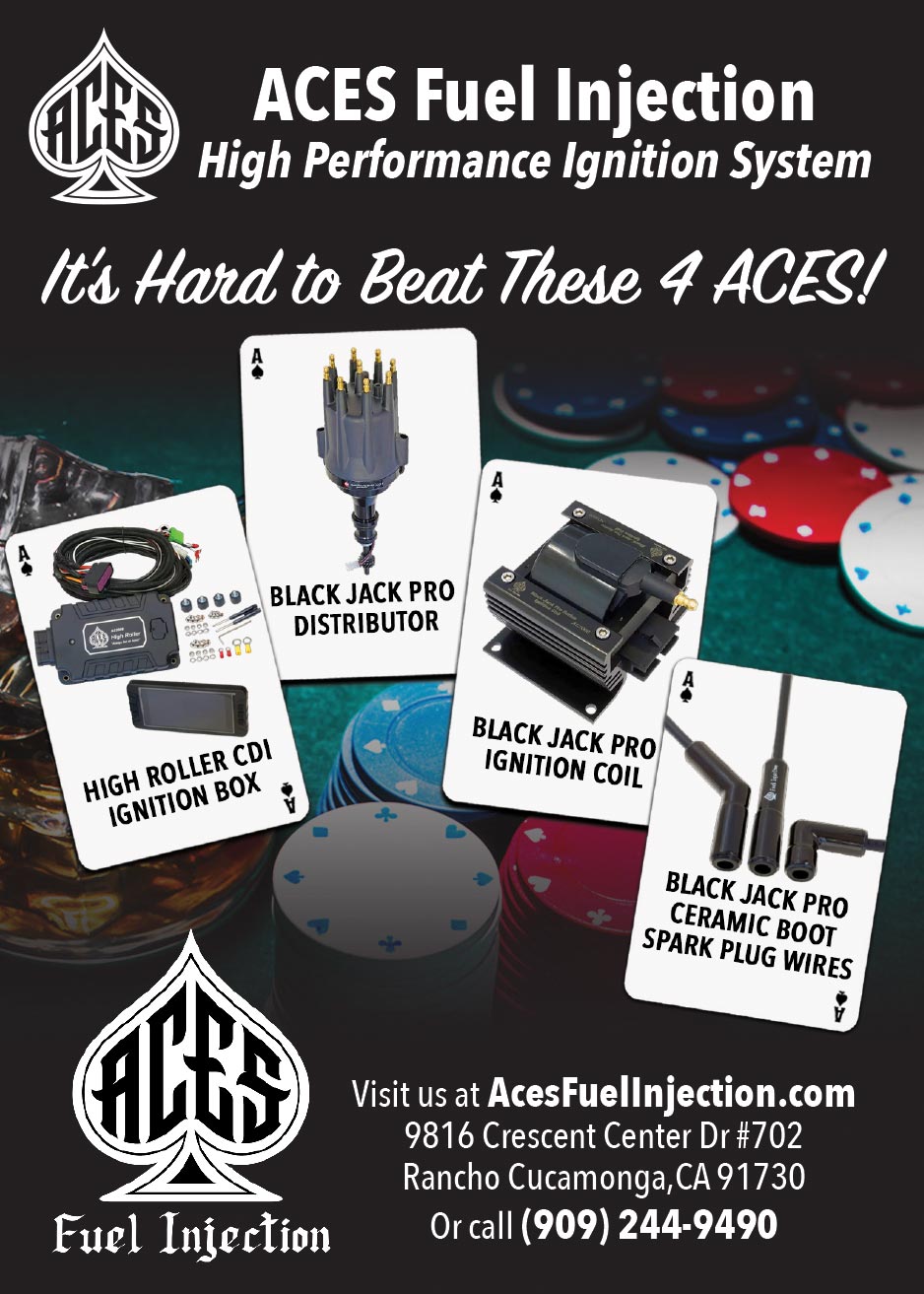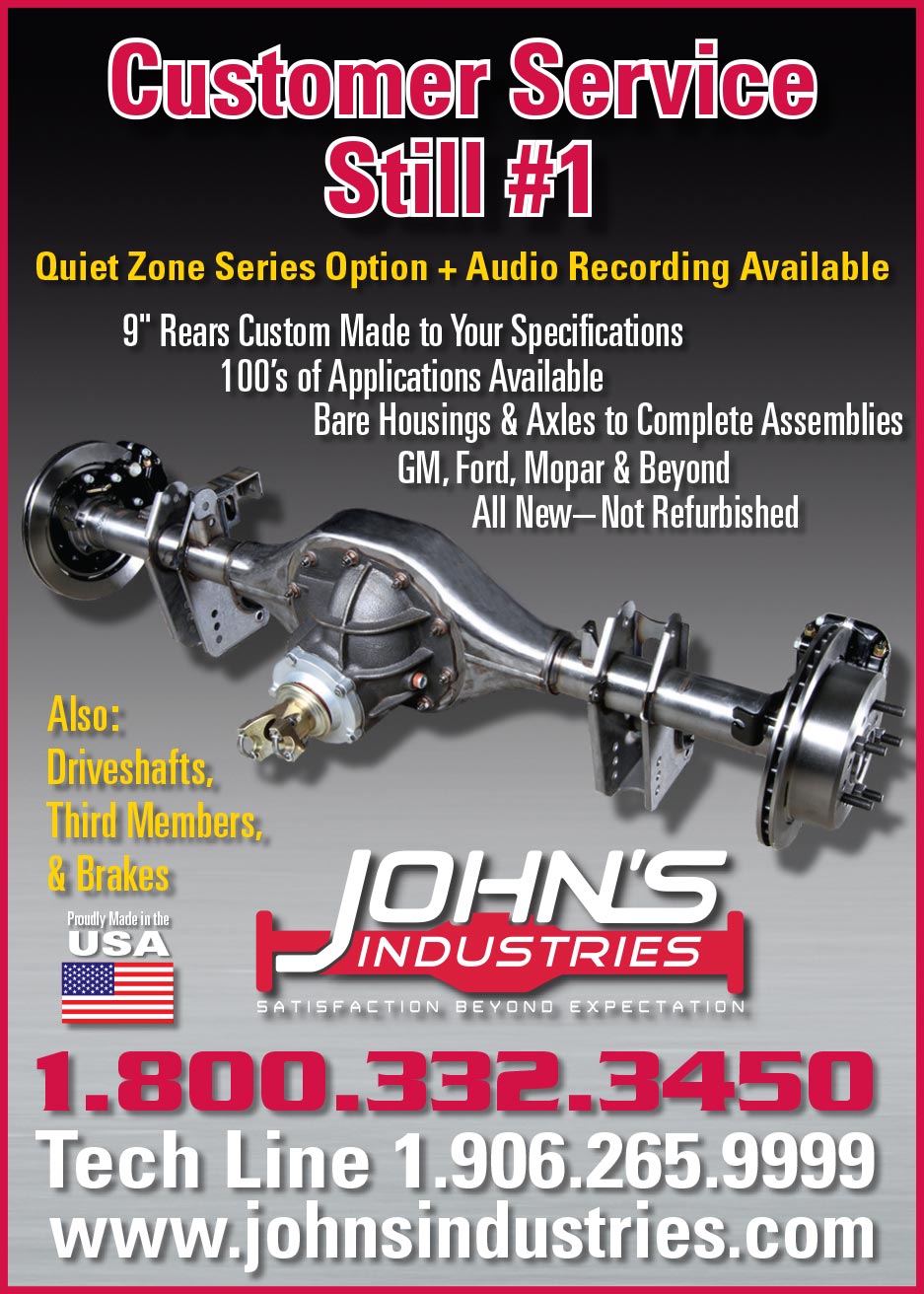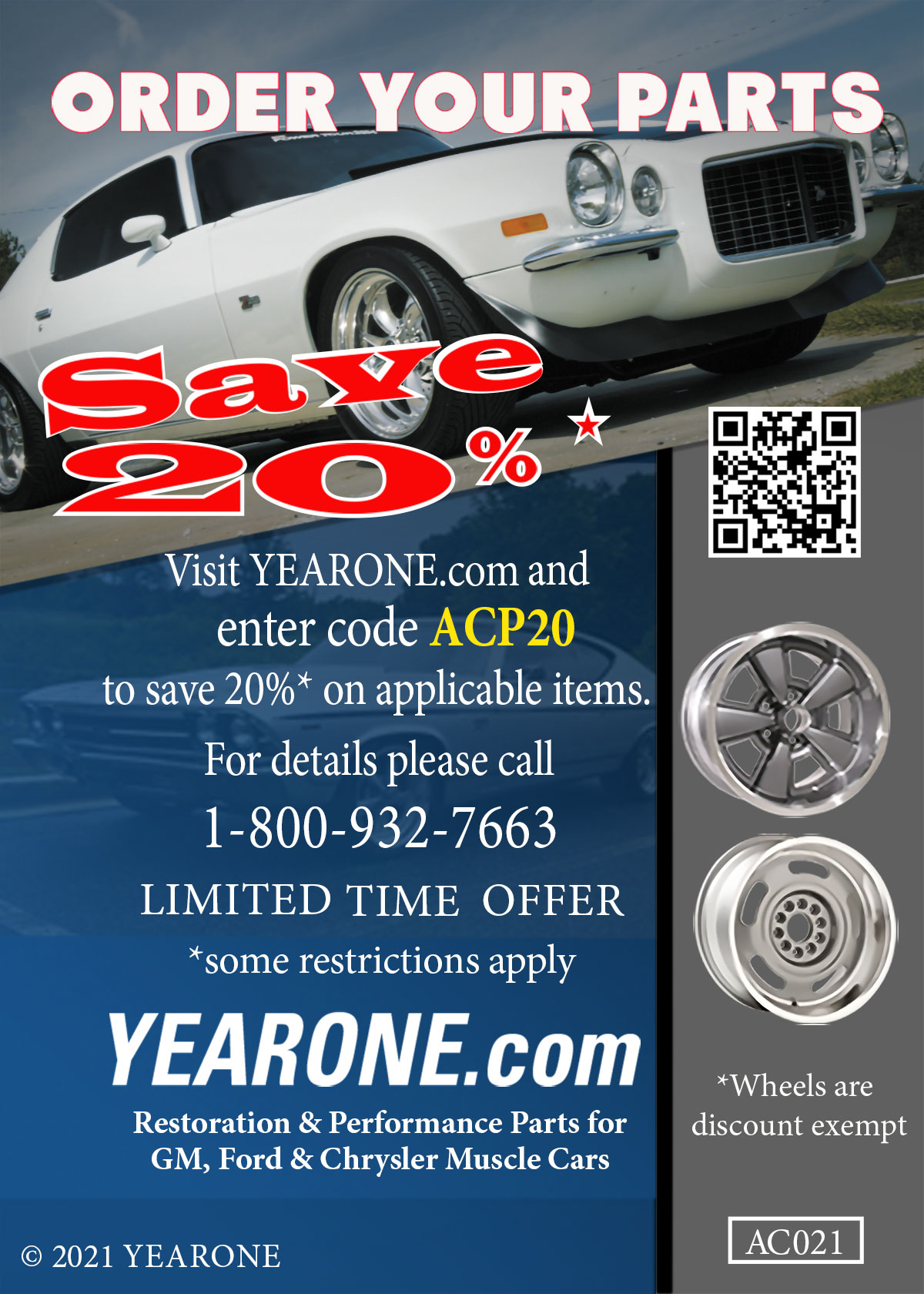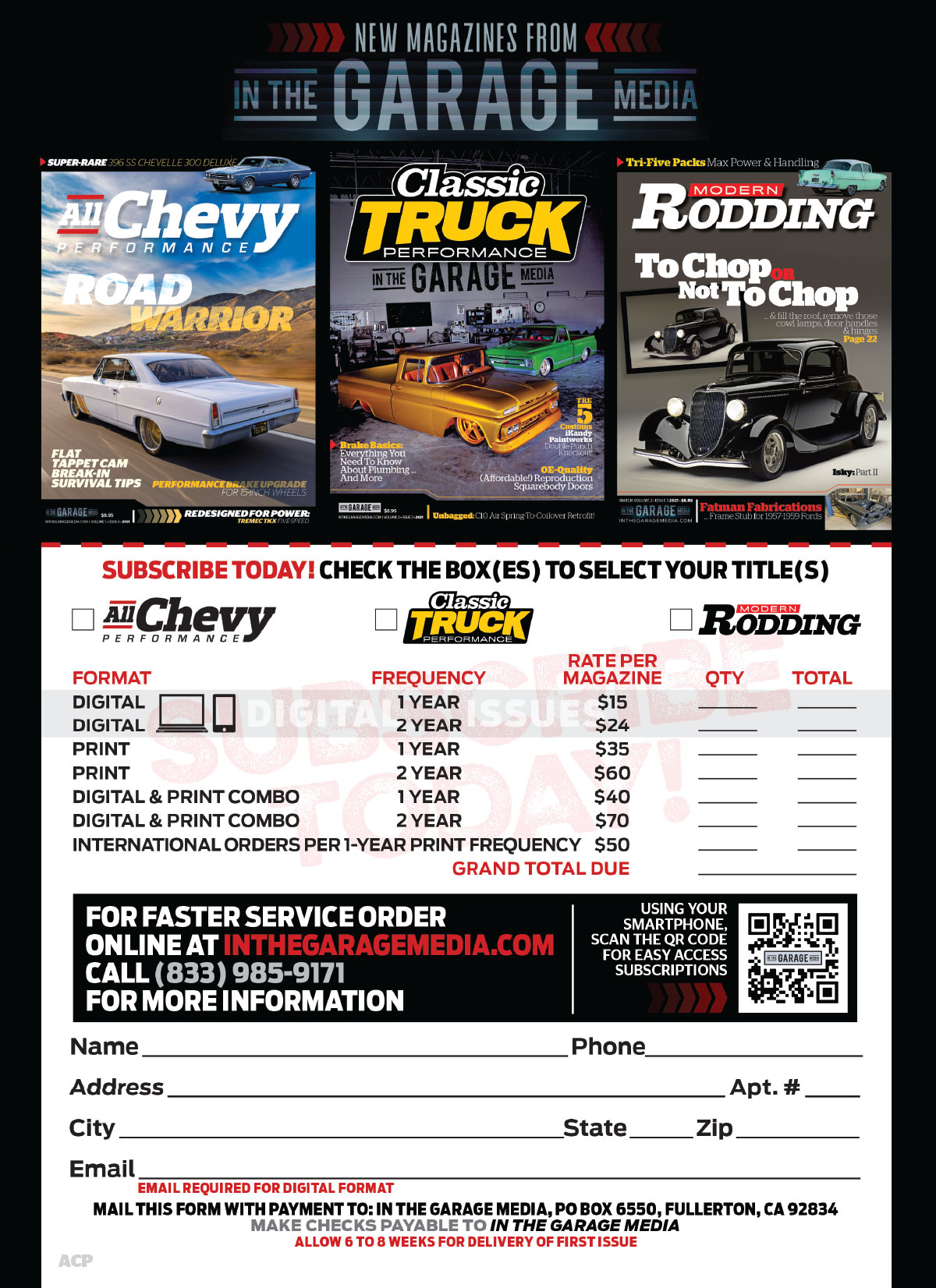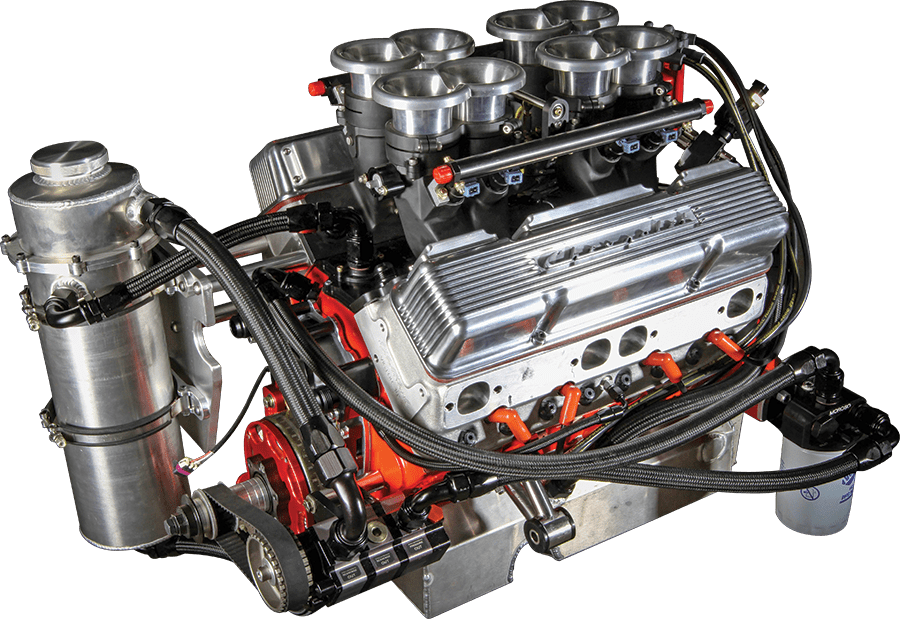

Deciphering Vintage
Camaro Cowl Tags
Choose the Right Cam
for Your LS Engine
Deciphering Vintage Camaro Cowl Tags
Choose the Right Cam for Your LS Engine
 TOC
TOC

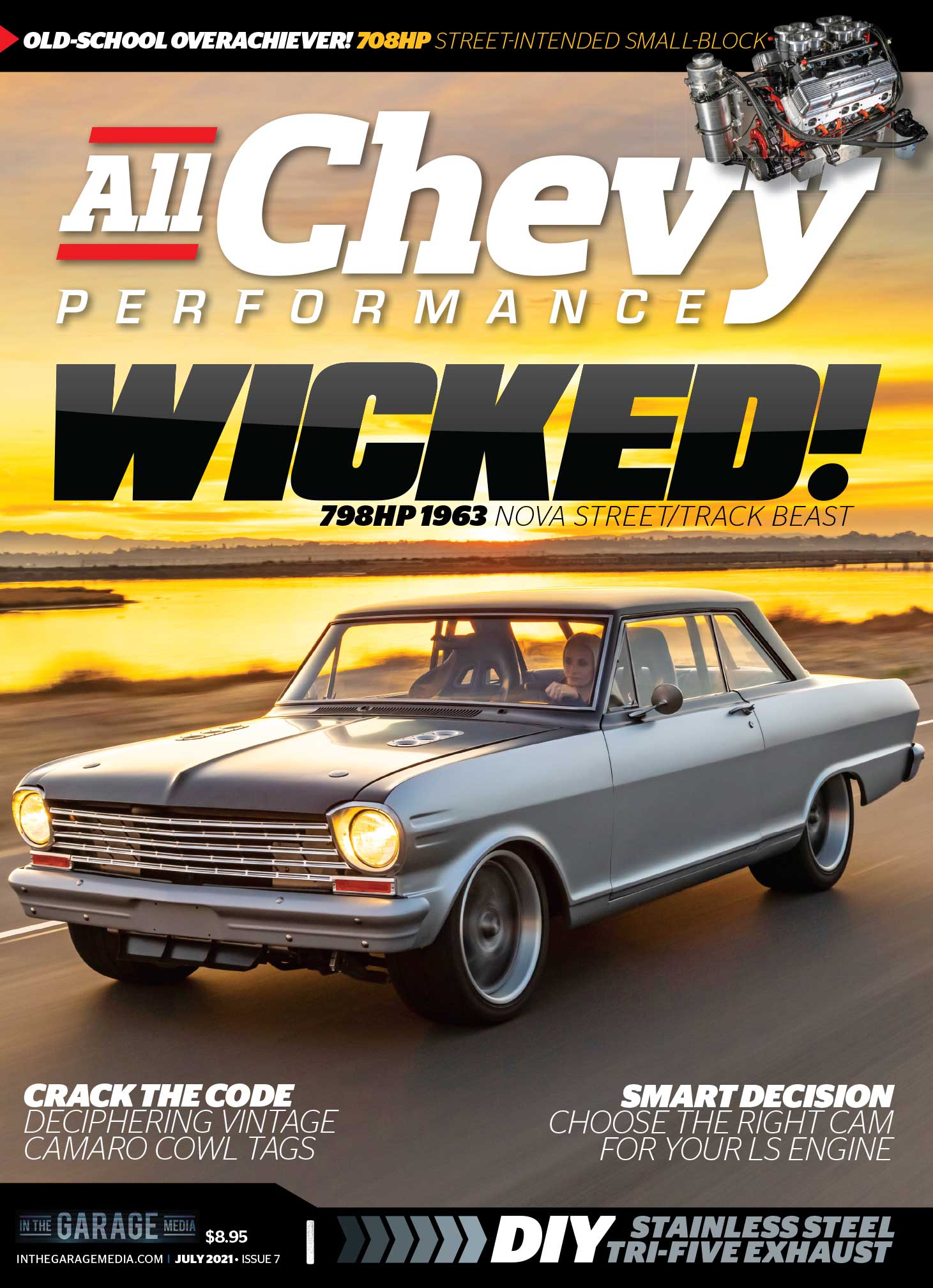


ROB MUNOZ
Wes Allison, Tommy Lee Byrd, Ron Ceridono, Grant Cox, Dominic Damato, Tavis Highlander, Jeff Huneycutt, Barry Kluczyk, Scotty Lachenauer, Jason Lubken, Steve Magnante, Ryan Manson, Jason Matthew, Josh Mishler, Evan Perkins, Richard Prince, Todd Ryden, Jason Scudellari, Jeff Smith, Tim Sutton, and Chuck Vranas – Writers and Photographers
AllChevyPerformance.com
ClassicTruckPerformance.com
ModernRodding.com
InTheGarageMedia.com
subscriptions@inthegaragemedia.com
Mark Dewey National Sales Manager
Patrick Walsh Sales Representative
Travis Weeks Sales Representative
ads@inthegaragemedia.com
inthegaragemedia.com “Online Store”
info@inthegaragemedia.com

Copyright (c) 2021 IN THE GARAGE MEDIA.
PRINTED IN U.S.A



 FIRING UP
FIRING UP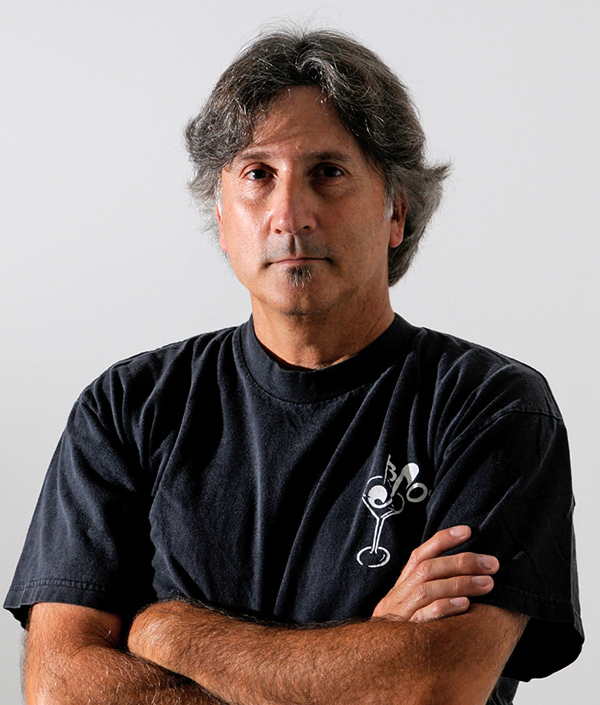

 BY NICK LICATA
BY NICK LICATAhere seems to be a resurgence in old-school-style builds—an outright attraction to what was cool back in the ’60s and early ’70s: Gassers, or at least cars built with a gasser look and style, are making a raging comeback, and the Southeast Gasser Association is taking their drag racing series next level as far as authenticity and accuracy goes. The Columbus, North Carolina, drag racing association has adopted strict rules for the sole purpose of keeping their events reminiscent of how the gasser drag racing classes looked and operated back in the ’60s—1967 to be exact. This means cars approved to compete must be 1967 or earlier model years, have period-correct wheels and tires, chassis and suspension, interior, and engine bay appearance, and the body mods must be consistent with what the racers did back then.
The association’s goal is to provide a fun family environment with its racers, and to put on an exciting show for the fans, namely an accurate recreation of a ’60s drag race. With that said, the fans even have an influence on the rules. For example, the fans made it known that manually shifted cars banging through the gears were far more exciting than watching cars with automatic transmissions go down the track, so SEGA founder, Quain Stott, adopted a rule stating all cars must have a manually shifted transmissions.
The rules page is thorough and worth a read, even just for entertainment value. I am particularly fond of the rule stating “no website (.com) lettering allowed on cars.” This one absolutely makes sense for the obvious reason that in 1967 the word “web” was typically related to spiders and “online” was a term likely used when a car made a very straight run down the dragstrip.
 Parts Bin
Parts Bin BY Nick Licata
BY Nick Licata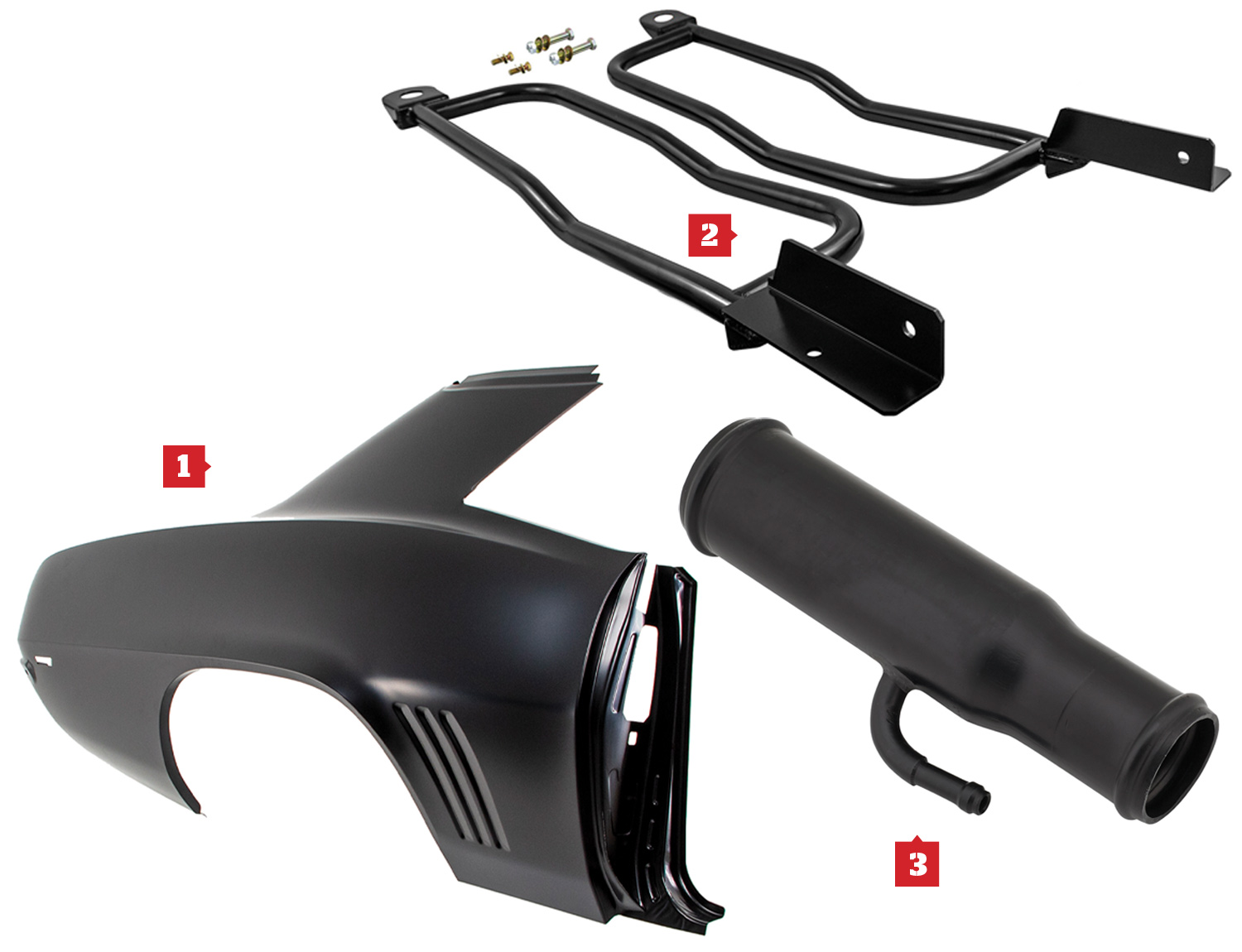
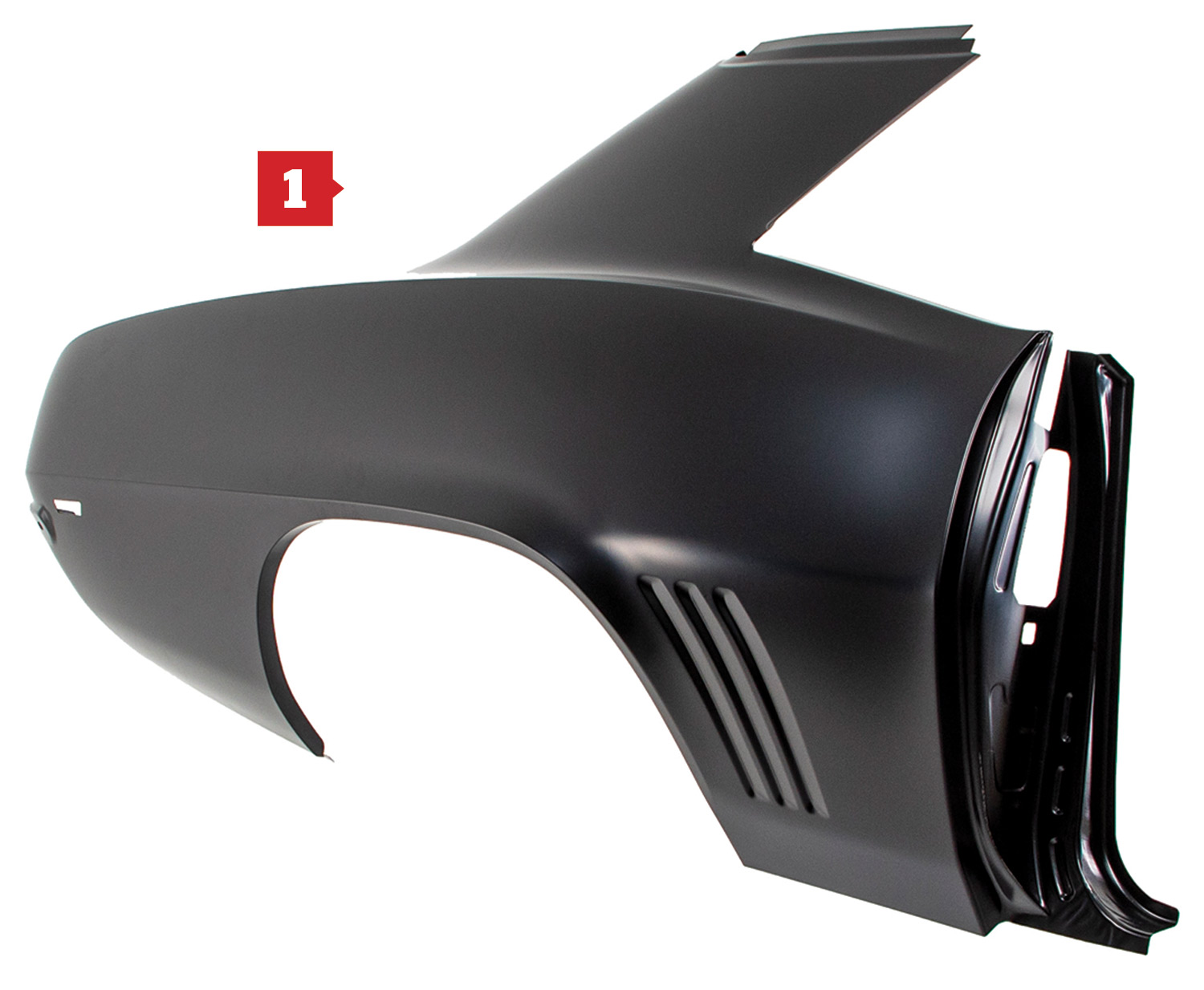
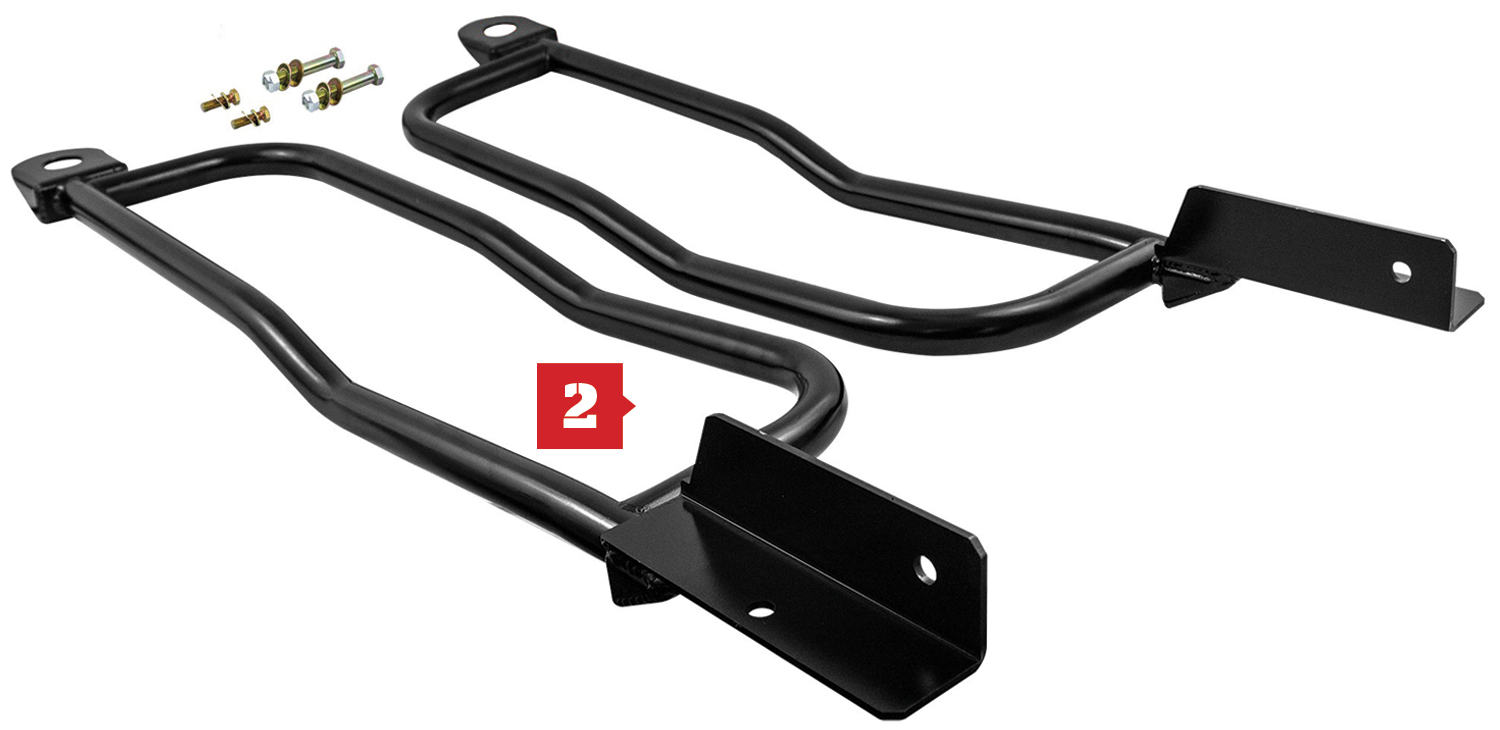
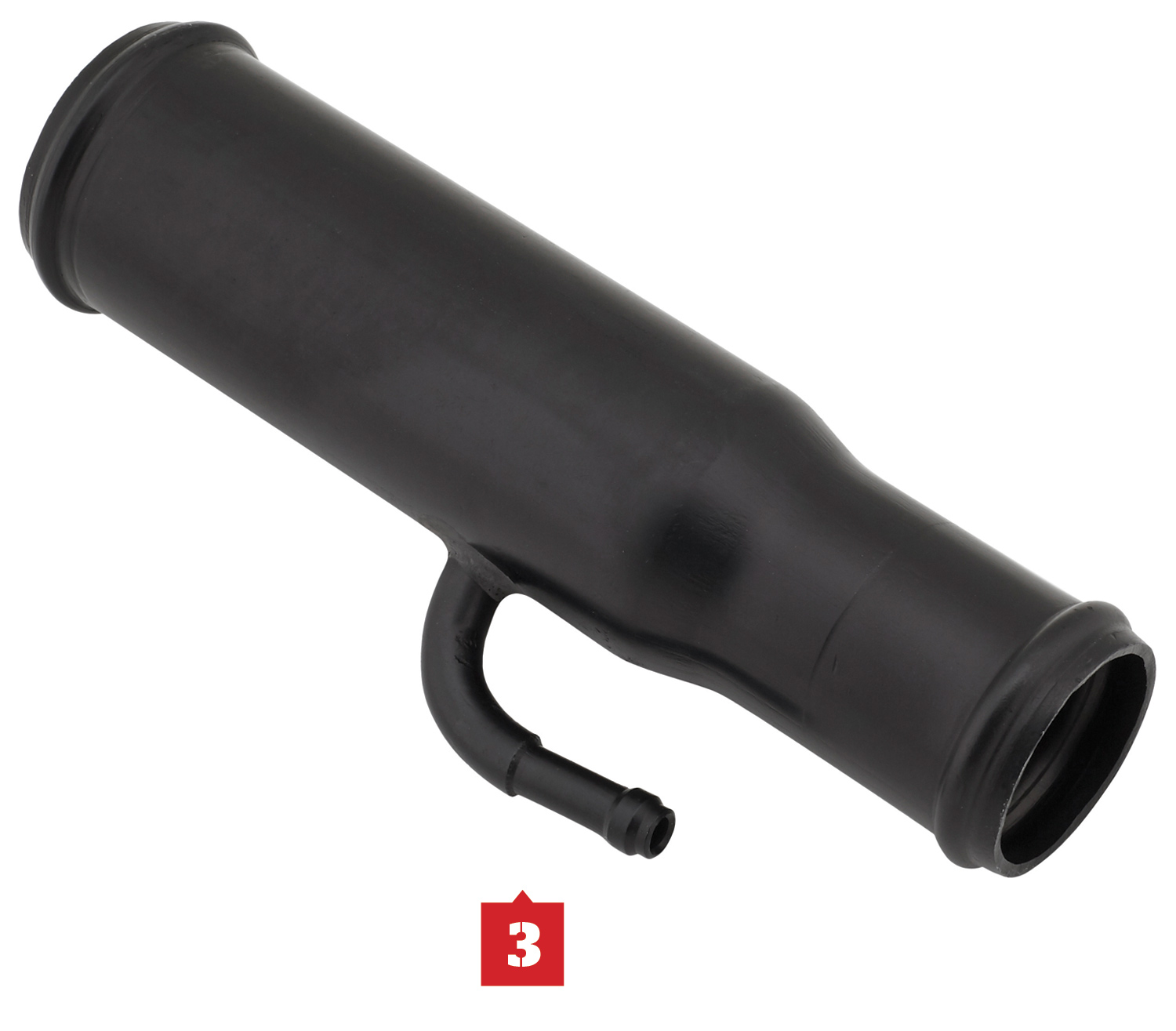
 CHEVY CONCEPTS
CHEVY CONCEPTS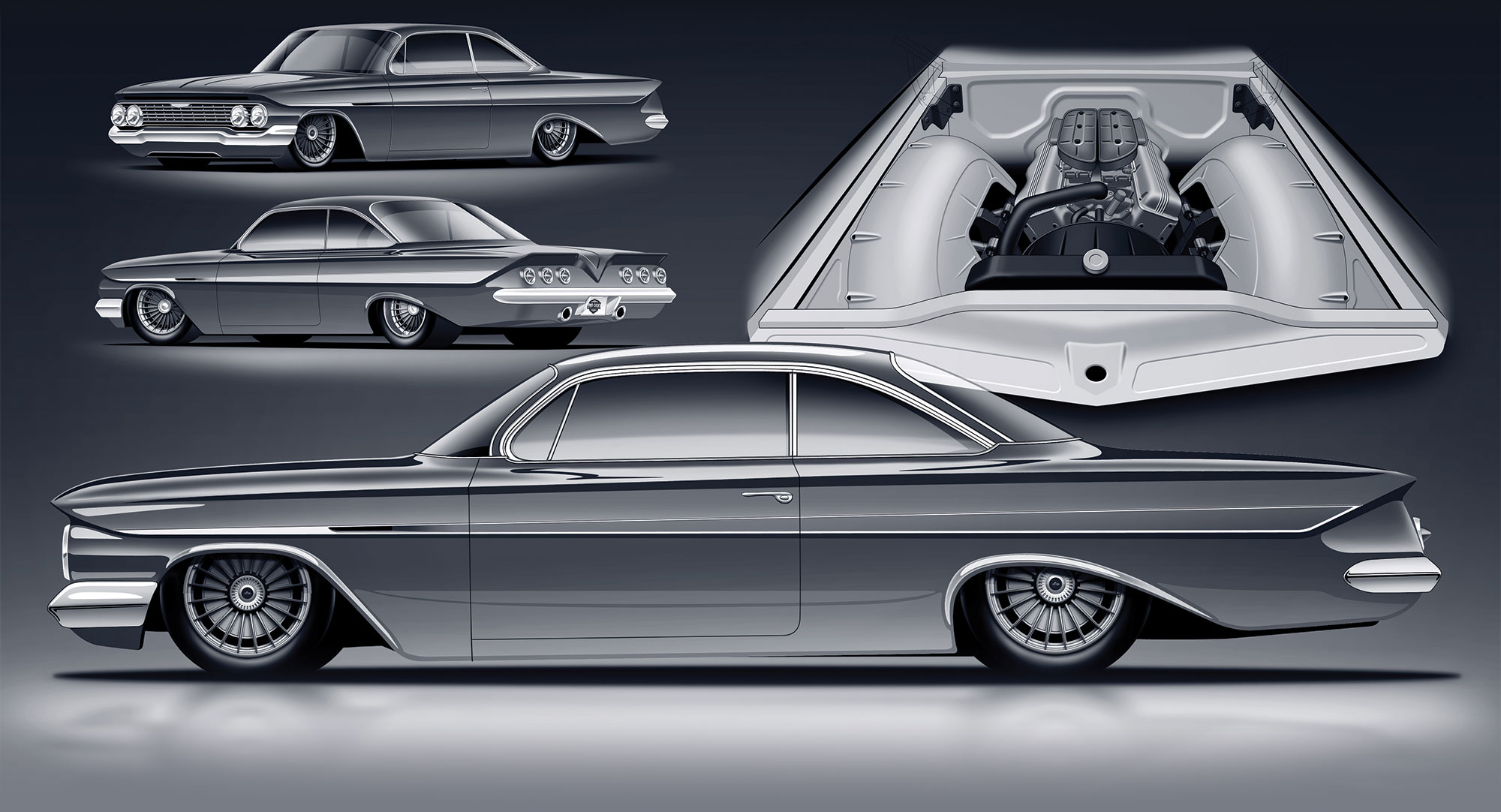

 Text and Rendering by Tavis Highlander
Text and Rendering by Tavis Highlander
 Text and Rendering by Tavis Highlander
Text and Rendering by Tavis Highlanderf you just quickly glance at this project, all you’ll see is a slick, low-slung, bubbletop Impala. There’s a lot more here though, and the guys at Big Oak Garage have put in some major hours to make it subtly more aggressive than stock.
Side profiles are really important when creating the illusion of flow and motion with a car. While a stock Impala has many lines from the side that sweep upward, this version now has all parallel or converging feature lines. This is thanks to a reverse wedge cut that runs from front to back. There’s material added to the rear and none added to the front, which creates an appearance of forward motion. The roof is also built from scratch and tapers downward at the windshield. That windshield also doesn’t run up the A-pillars as far as it used to.
All of those big sheetmetal mods are a solid basis for some trick little details. Most of the trim is CNC cut and made to fit perfectly around the modified glass. Custom wheels were designed by me and then cut by Schott. These mimic the original hubcap styling but don’t simply copy it outright. Underhood you’ll see an all-aluminum 509 with custom valve covers and air cleaners.
It is being presented in grayscale since the final color is a secret for now. Soon the car will be unveiled and the beautiful Axalta paint will be on display. Backing up the shiny paint and slick look is a Roadster Shop chassis. The owner, Dan Duffy, will definitely be turning heads as well as carving corners in this wild build.
 FEATURE
FEATURE
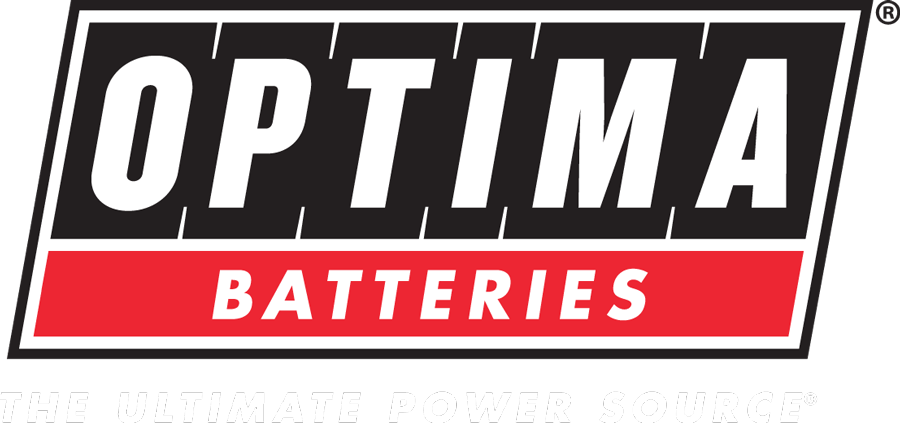

 Photography by Wes Allison
Photography by Wes Allisonetting a car for free sounds cool, right? That’s exactly what Jason Scudellari thought when his buddy Evan Perkins, who was the editor of Hot Rod magazine at the time, offered him a 1963 Nova at no cost. Perkins was looking to start the restoration project but his day job and a busy family life left little time to get the thing going, so the car sat stagnant for a few years before he offered the car to Jason.
“I’ve never been one to say ‘no’ to someone offering me a vintage car for free no matter what condition it was in,” Jason says. “That was before I actually saw the car in person. When [Perkins] trailered that rust bucket to our shop, I took one look and wondered what I was getting myself into; it was an absolute mess.”
Now the “proud” owner of a 1963 Nova, Jason had the idea to build the car for his wife, Randi. She’s always wanted a first-generation Chevy II—it was her dream car, one she always talked about. Still a bit reluctant on having this be the car to build for Randi due to the car’s condition, he sucked it up and got busy putting together a plan.
 TECH
TECH
 Photography by The Author
Photography by The AuthorWith 436 ci, natural aspiration, and EFI, the project engine we’re going to discuss in this story spun to 7,300 rpm and lit up the dyno with 708 hp and 614 lb-ft of torque. That was with a comparatively small camshaft and a pump gas–friendly compression ratio.
Those peak numbers are impressive, but perhaps more so was the fact that its glorious, neck-tugging torque came in immediately in the powerband: 451 lb-ft at only 3,500 rpm. That’s only 19 lb-ft short of the factory LS7 engine’s peak torque of 470 lb-ft, which occurs at 4,800 rpm.
 FEATURE
FEATURE
 Photography BY Grant Cox
Photography BY Grant Coxenry Fisher is into cars; he’s been in the used car business for over 51 years and building show-quality vintage cars and trucks for well over 20. His stable leans heavily toward the classic truck scene, which includes a 1972 C10, 1972 Blazer, a 1968 C10, and a slew of other sweet muscle cars and pickup trucks—all built from the ground up and all with LS power. He digs the style of classics yet enjoys the reliability and performance of late-model engines.
 TECH
TECH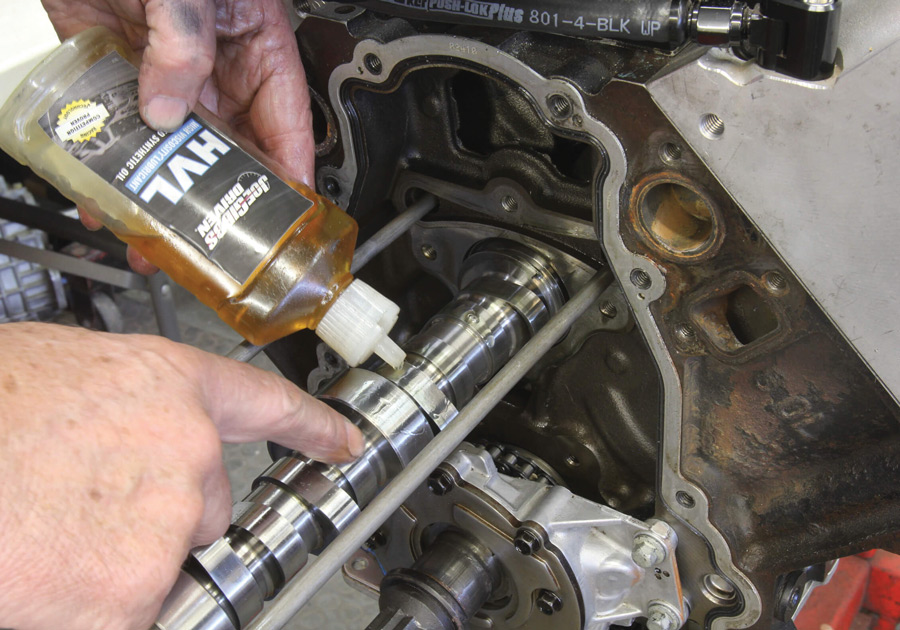
 Photography by Jeff Smith
Photography by Jeff Smithhere comes a time when every gearhead wants more from their engine. Sure, we vowed we’d leave it stock. Then we threw the entire catalog of bolt-on parts at it. And still, we want more. The high-flow intake manifold helped. The big-tube headers did too. But when it comes to truly awakening an engine’s power potential, it’s time for a camshaft.
If the cylinder heads are considered the lungs of the engine, the camshaft is undoubtedly its brain. Not only will it determine how much power and torque an engine will make, it controls at what point in the powerband they occur. Camshaft choice will also dictate idle quality, piston-to-valve clearance, and many more variables. That means choosing the right camshaft for your application is immensely important.
Due to the unfailing popularity of LS engines, from late-model OEM vehicles to street rods to retro-swapped muscle cars it seemed a natural platform to focus on when setting some guidelines on just how to pick one. For some expert advice on the subject we turned to Brian Tooley of Brian Tooley Racing (BTR) who specializes in LS camshafts, springs, and other performance valvetrain hardware.
 FEATURE
FEATURE
 Photography by The Author
Photography by The Authorn a chilly Carolina night, the sky is dark with stars hiding behind tall trees. There’s little noise—cicadas are dormant in wintertime. A single glow from an open garage door is like a bug zapper attracting local gearheads. A sudden blast of noise from the garage echoes off the trees, like a dam giving way. It’s the roar of a 900hp open-header-big-cam small-block. The sound is followed by the sweet, stinging smell of race gas.
 FEATURE
FEATURE
 Photography by The Author
Photography by The Authorn a chilly Carolina night, the sky is dark with stars hiding behind tall trees. There’s little noise—cicadas are dormant in wintertime. A single glow from an open garage door is like a bug zapper attracting local gearheads. A sudden blast of noise from the garage echoes off the trees, like a dam giving way. It’s the roar of a 900hp open-header-big-cam small-block. The sound is followed by the sweet, stinging smell of race gas.
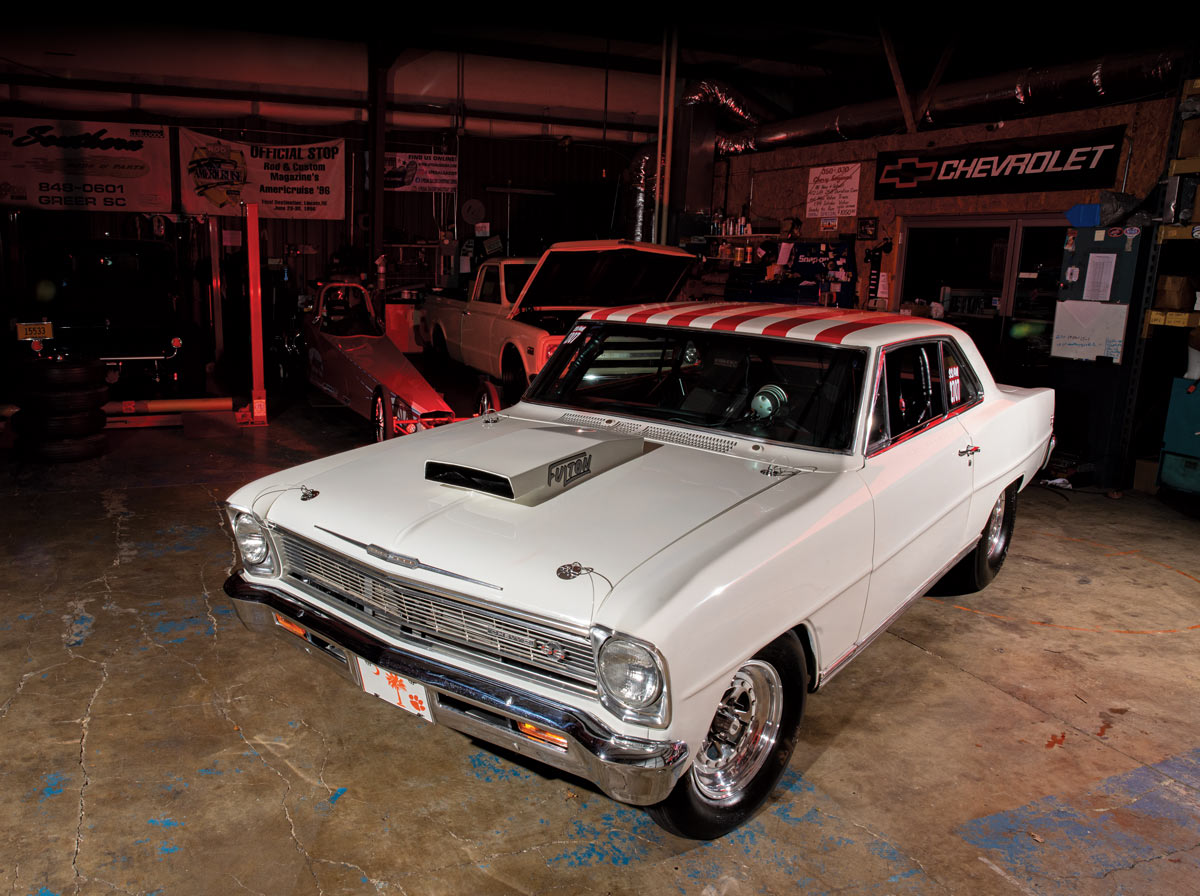
 TECH
TECH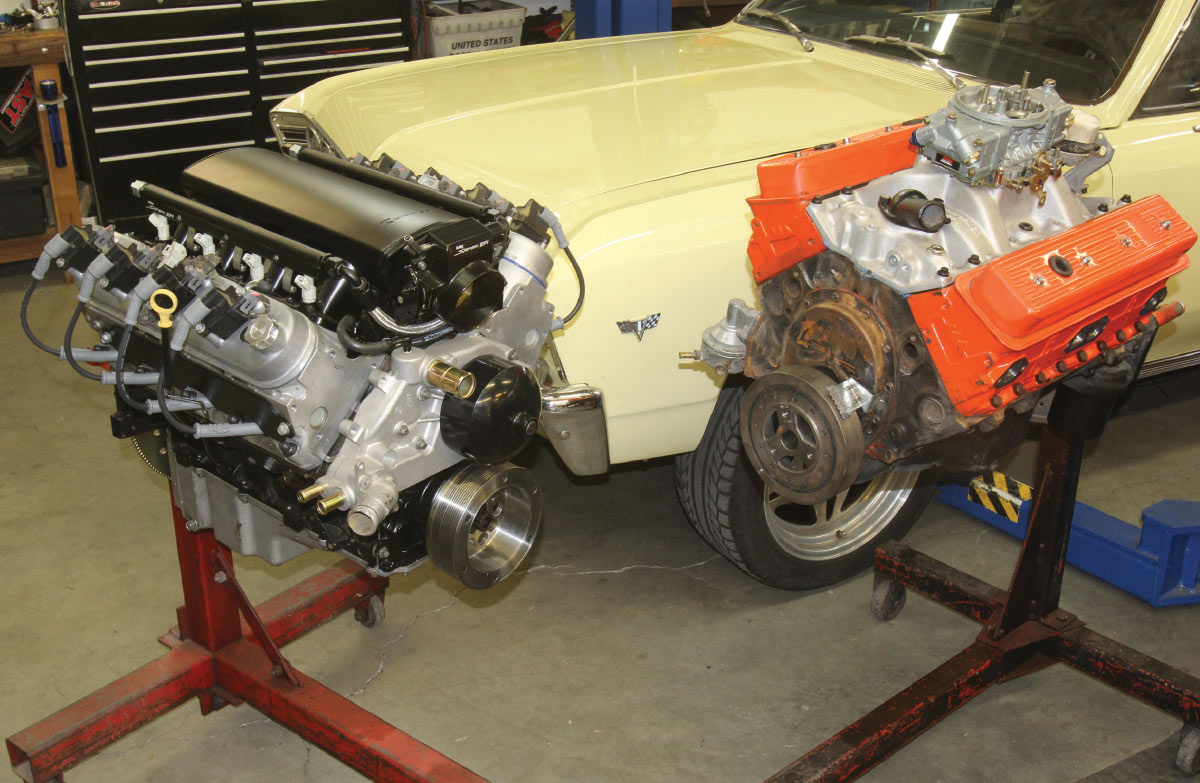

 Photography by The Author
Photography by The Authoror the student of internal combustion, you’ve likely heard the oft-repeated line that an internal combustion engine is nothing more than an air pump. The reason that’s a cliché is because it’s true. The more air an engine can capture in the cylinders and then squeeze into making cylinder pressure, the more horsepower and torque it will make.
The title for this story might lead you to believe this is a treatise on valve seat angles. But it’s not. This story will instead focus on a far less popular but equally important topic of valve angles. We’re going to use the small-block Chevy family as our point of reference for this story because this engine has been around for over 60 years and has experienced a huge transition in valve angles.
Let’s start with its definition as the angle created between the centerline of the valve and the centerline of the cylinder. For the traditional small-block Chevy, its original production 23 degrees first appeared in the original 265ci small-block in 1955 and has remained that same number through countless millions of Chevrolet production engines.
 FEATURE
FEATURE

 Photography by Randy Pugh
Photography by Randy Pughor Ray Thompson the Camaro bug started in 1975. But it wasn’t just a subtle itch that needed a good scratching, it went much deeper. “When I took a ride in my buddy’s insanely fast 1969 Camaro that had 4.88 gears, it would actually lift the front tires off the street. From that moment I was hooked.” Ray continues, “A few years later I had just turned 16 and saw this 1968 Camaro in a Sears parking lot in November of 1978, so I left a note on the car informing the owner I was an interested buyer. In February 1979 he finally called me back and was ready to sell. I gave him $600 and became a proud young Camaro owner.”
 TECH
TECH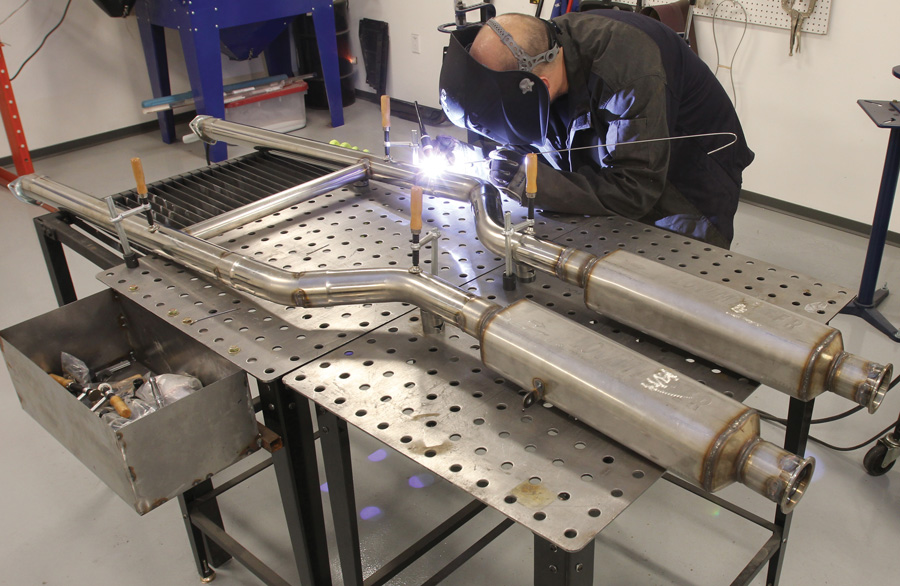
 Photography by The Author
Photography by The Authorhen it comes time to sorting out the exhaust system on that muscle car or street machine, most of us are concerned with two things: sound and performance. But finding that aggressive tone without resulting in so much excessive drone that your fillings fall out can be a challenge. Larger mufflers tend to provide a more mellow tone, but there isn’t always the room to mount such a can underneath that A-body. And choking down that 572ci big-block with the wrong muffler is so counterproductive we don’t even need to mention that one!
So, like many things in our hobby, designing the right exhaust system to match your vehicle often comes down to a compromise between what you want, what will fit, and what the engine wants.
For a lot of car guys, building an exhaust consists of a trip to the local muffler shop, picking out a pair of chambered cans, and leaving their ride in the hands of the guy with the welder. A dual set of aluminized pipes is usually the result with the mufflers hanging in the easiest spot, without regard to problems like in-cabin drone and increased passenger compartment temperatures due to their location. For most of us, there really isn’t another option, unless you’re capable of welding and have access to a lift. But if those two points are not a hindrance, there are a number of options available that can result in a much nicer exhaust system.
 FEATURE
FEATURE Photography By The Author
Photography By The Authorvery car guy on this planet has heard about barn finds and amazing discoveries of true survivors. This 1957 Chevy Bel Air isn’t one of those cars—it lived most of its life outdoors, in the Southeast, so you know where this is headed. It didn’t take long for the top to start leaking, which led to the demise of the floorpan, trunkpan, and most of the other panels. After years of neglect, the car was dragged out of the field and taken to Automotive Sandblasting & Restoration (ASR) in Friendsville, Tennessee, for a much-needed makeover.
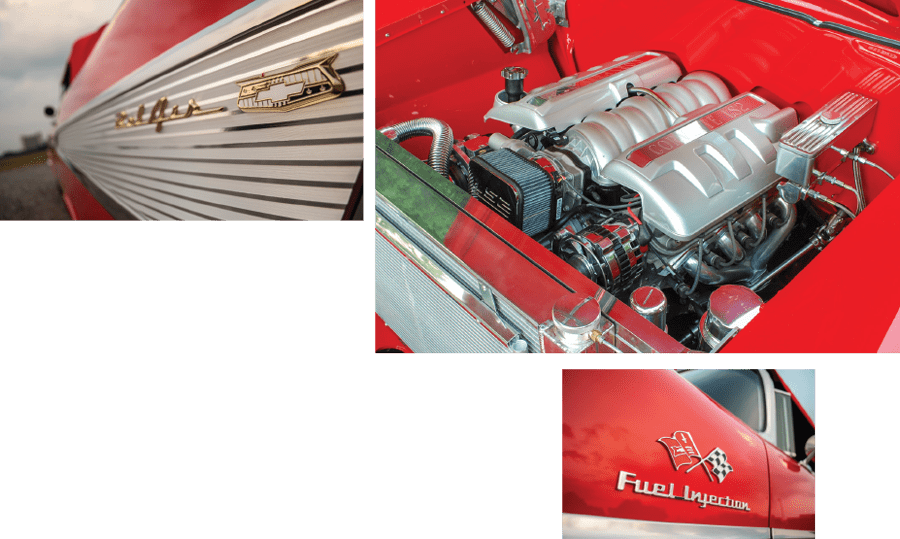
 Photography By The Author
Photography By The Authorvery car guy on this planet has heard about barn finds and amazing discoveries of true survivors. This 1957 Chevy Bel Air isn’t one of those cars—it lived most of its life outdoors, in the Southeast, so you know where this is headed. It didn’t take long for the top to start leaking, which led to the demise of the floorpan, trunkpan, and most of the other panels. After years of neglect, the car was dragged out of the field and taken to Automotive Sandblasting & Restoration (ASR) in Friendsville, Tennessee, for a much-needed makeover.


 EVENTS
EVENTS Photography BY The Author
Photography BY The Author

t was March 2020 when California and much of the nation was pretty much shut down due to the pandemic. We were encouraged to do nothing beyond shopping for essential items like food, water, and apparently hoard toilet paper. Binge-watching streaming shows like Breaking Bad (some for the second time), Ozark, and a show about some strange girl who plays chess really well was pretty much it for excitement. After a few months of being cooped up, Jason Scudellari and his buddy Hek Valdez couldn’t take it any longer. They weren’t into playing trivia on Zoom and a jigsaw puzzle wasn’t their thing. They just wanted to get out and drive their vintage trucks—Jason’s a supercharged LS-powered 1969 Ford F-100 and Hek’s a 1964 Chevy C10.
 EVENTS
EVENTS
 Photography BY The Author
Photography BY The Author

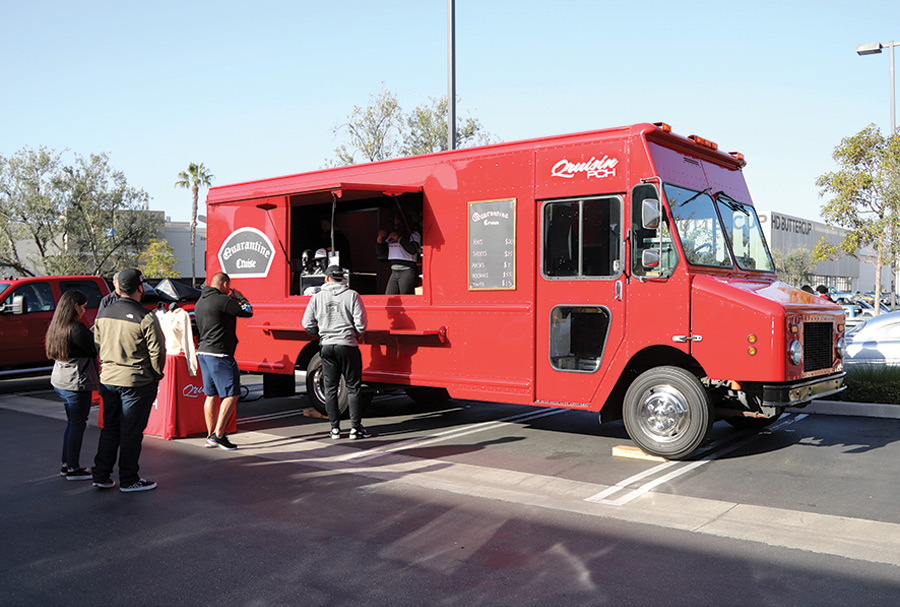
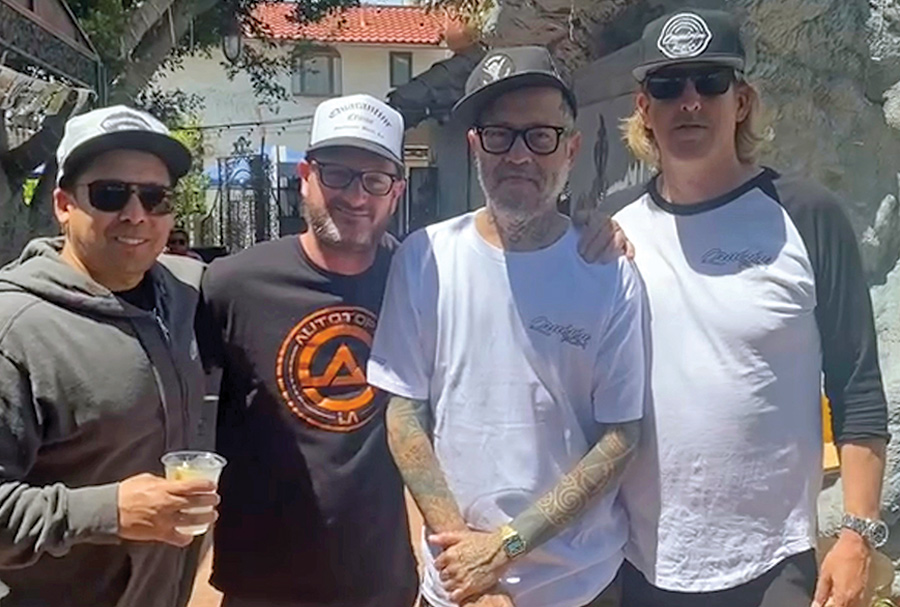

t was March 2020 when California and much of the nation was pretty much shut down due to the pandemic. We were encouraged to do nothing beyond shopping for essential items like food, water, and apparently hoard toilet paper. Binge-watching streaming shows like Breaking Bad (some for the second time), Ozark, and a show about some strange girl who plays chess really well was pretty much it for excitement. After a few months of being cooped up, Jason Scudellari and his buddy Hek Valdez couldn’t take it any longer. They weren’t into playing trivia on Zoom and a jigsaw puzzle wasn’t their thing. They just wanted to get out and drive their vintage trucks—Jason’s a supercharged LS-powered 1969 Ford F-100 and Hek’s a 1964 Chevy C10.
Advertiser
- ACES Fuel Injection87
- Aldan American47
- American Autowire69
- American Legend Wheels75
- Art Morrison Enterprises21
- Auto Metal Direct55
- Automotive Racing Products53
- Borgeson Universal Co.59
- Bowler Performance Transmissions85
- Classic Industries33
- Classic Instruments9
- Classic Performance Products4-5, 85, 92
- Concept One Pulley Systems85
- Dakota Digital91
- Danchuk USA13
- Duralast25
- Dynamat31
- Eddie Motorsports67
- FiTech EFI65
- Flaming River Industries37
- Gandrud Chevrolet85
- Golden Star Classic Auto Parts7
- Granatelli Motor Sports, Inc.73
- Heidts Suspension Systems73
- HushMat81
- John’s Industries87
- Lokar2
- National Street Rod Association39
- Optima Batteries11
- Original Parts Group81
- Performance Online29
- Scott’s Hotrods ‘N Customs81
- Speedway Motors45
- Steele Rubber Products23
- Strange Engineering75
- The American Tri-Five Association61
- Vintage Air6
- Wilwood Engineering41
- Year One87
 BOWTIE BONEYARD
BOWTIE BONEYARD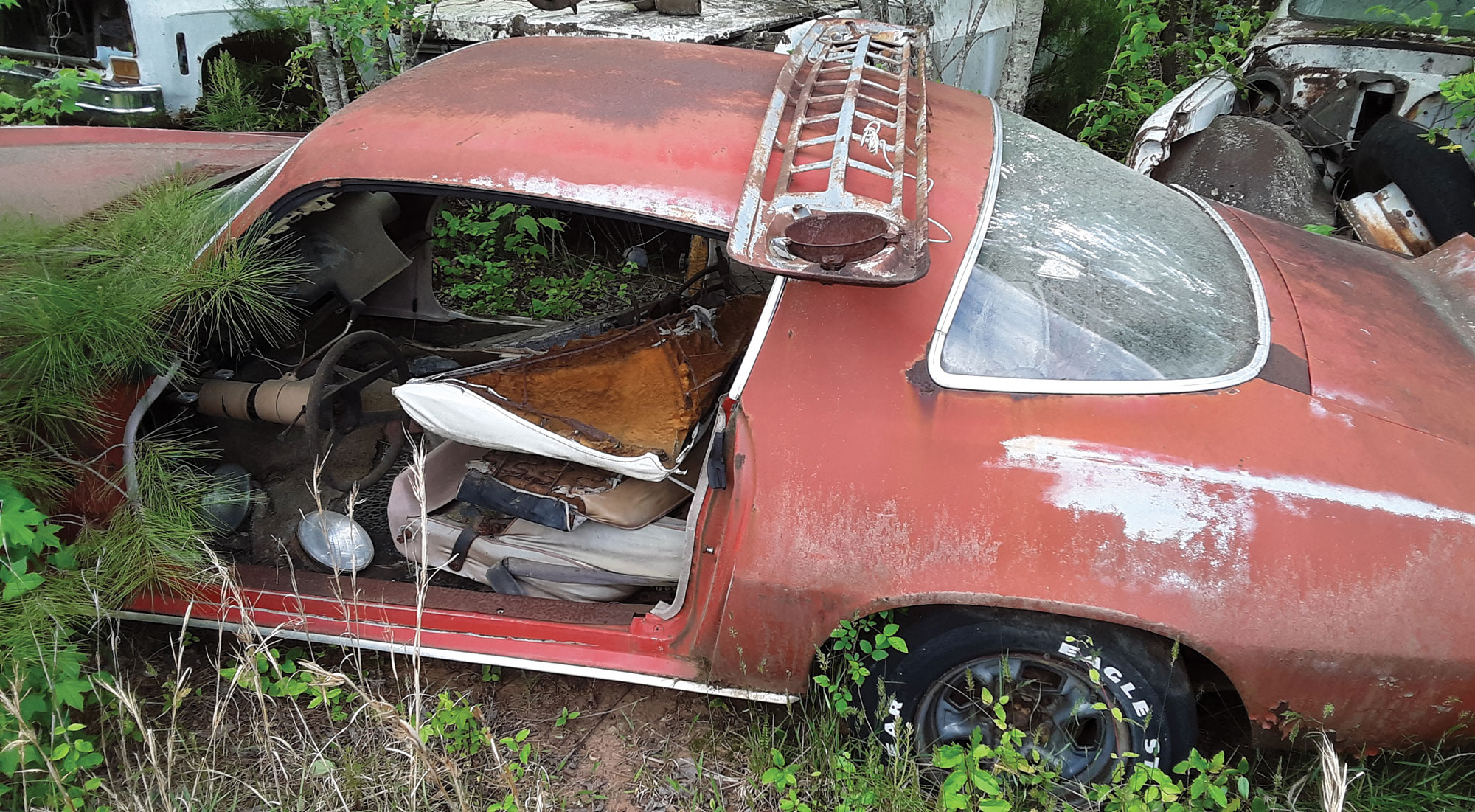
The Camaro
 Photography By The Author
Photography By The Authorveryone loves a Camaro. Ever since Chevrolet decided to give the Mustang some competition in the ponycar segment, the Camaro has brought a sporty vibe to Chevy showrooms all over the globe. In our junkyard exploits we’ve encountered some unusual Camaros. Here’s a rundown of some highlights, with special attention paid to unique numbers.





